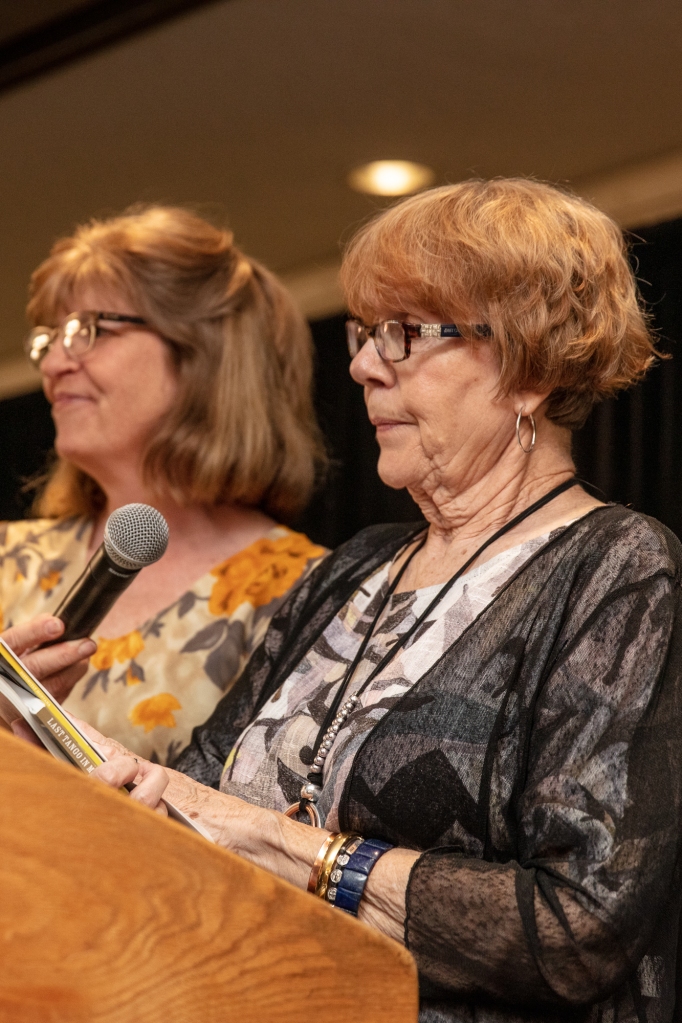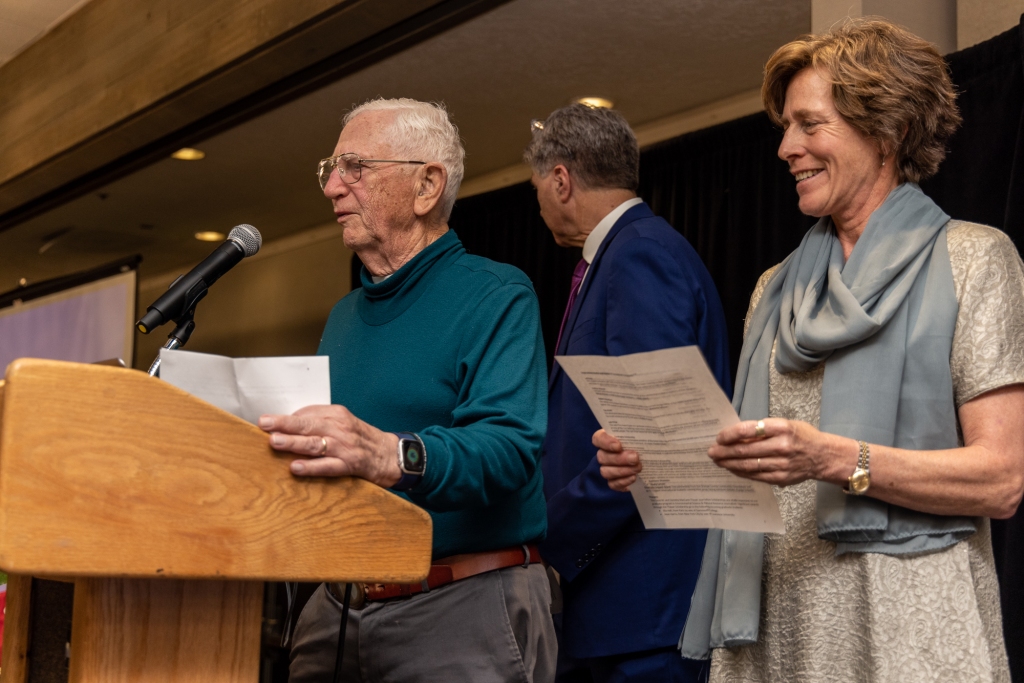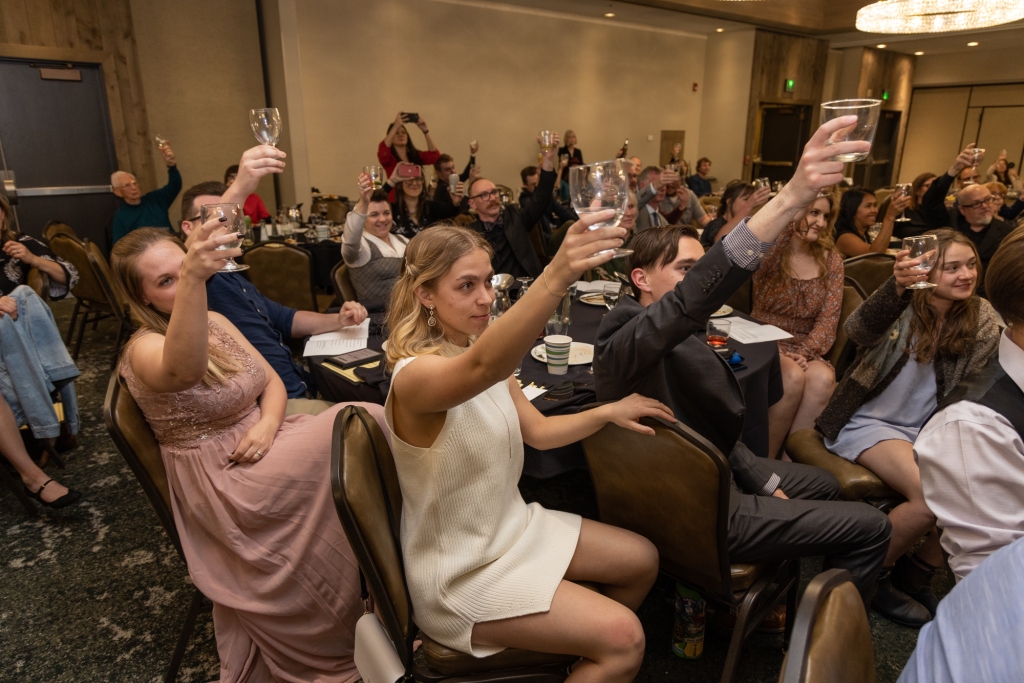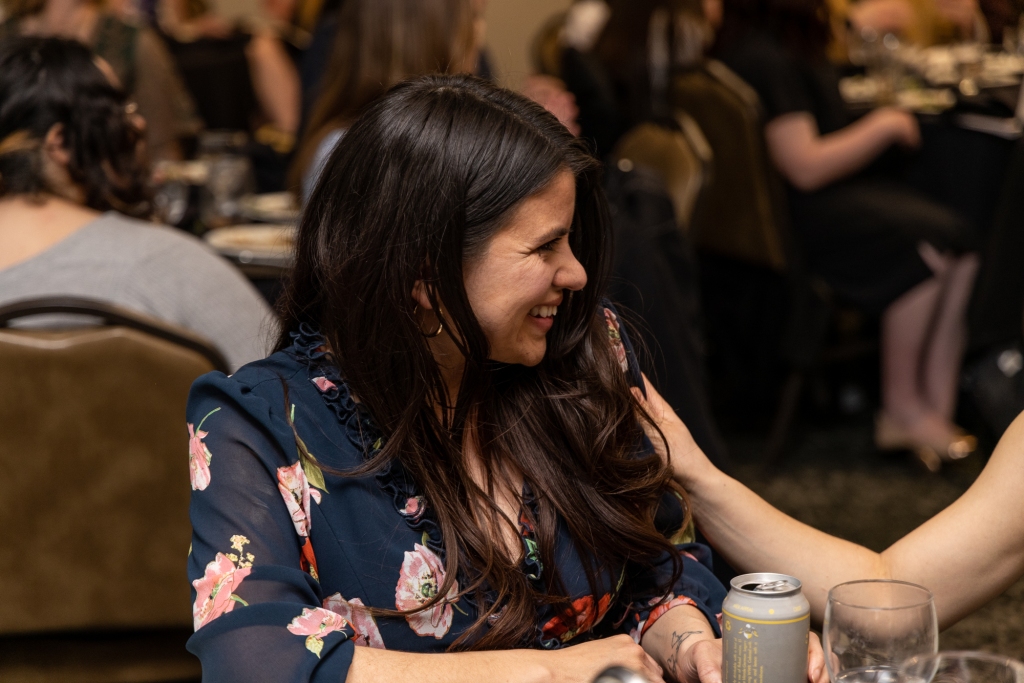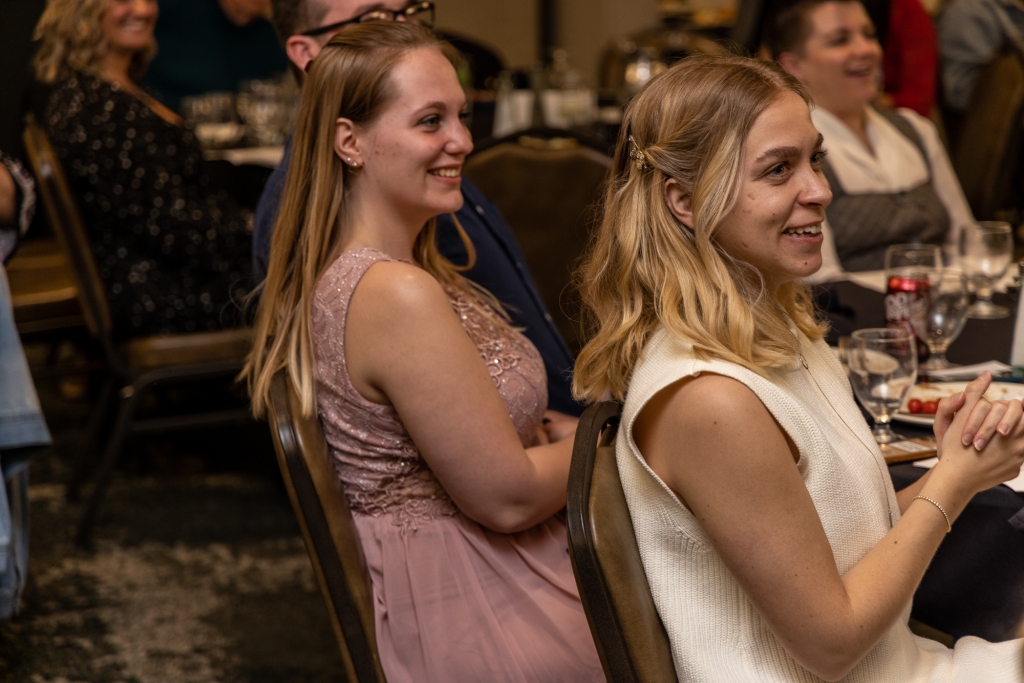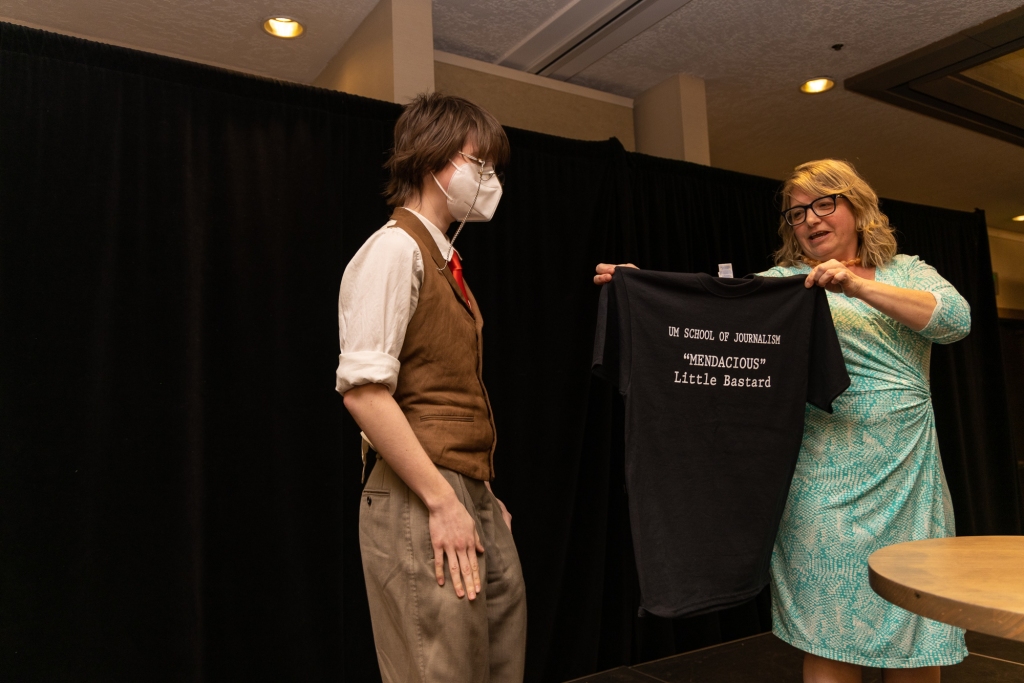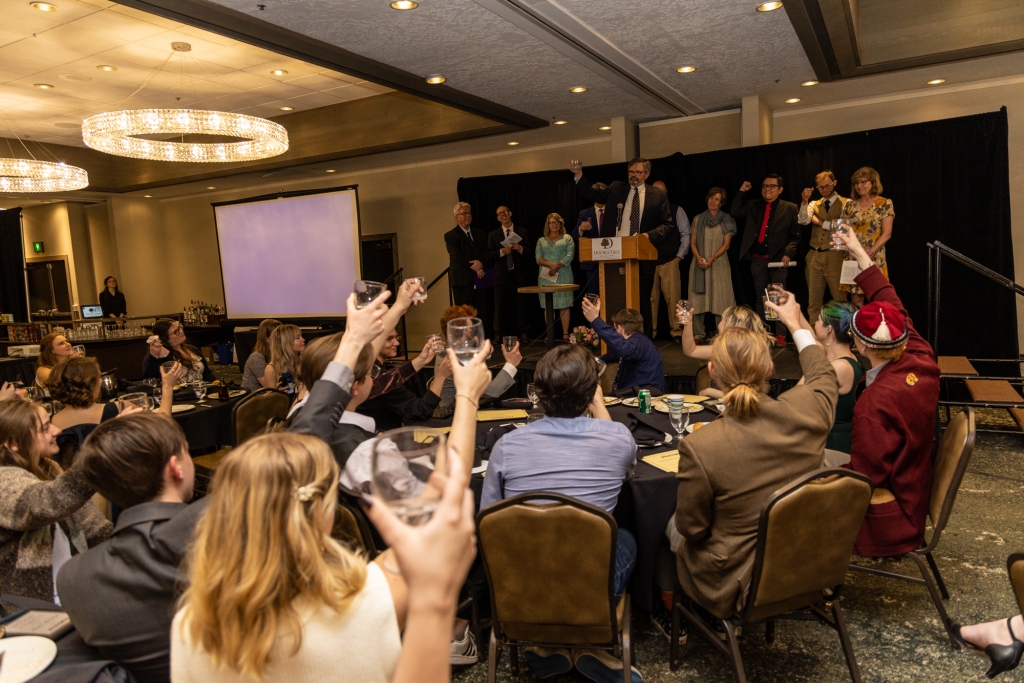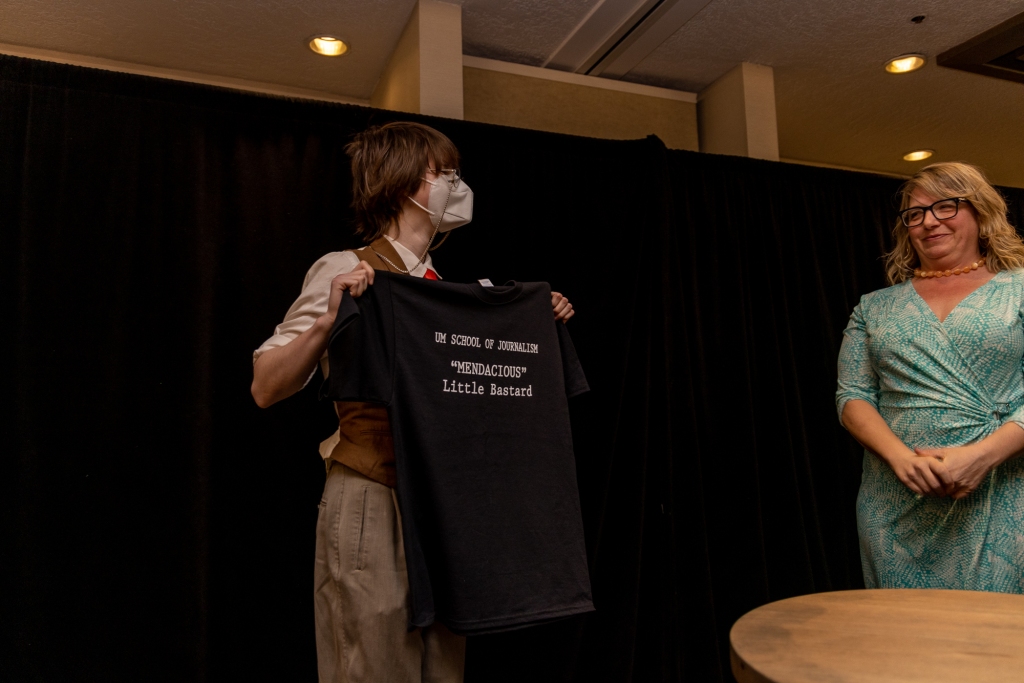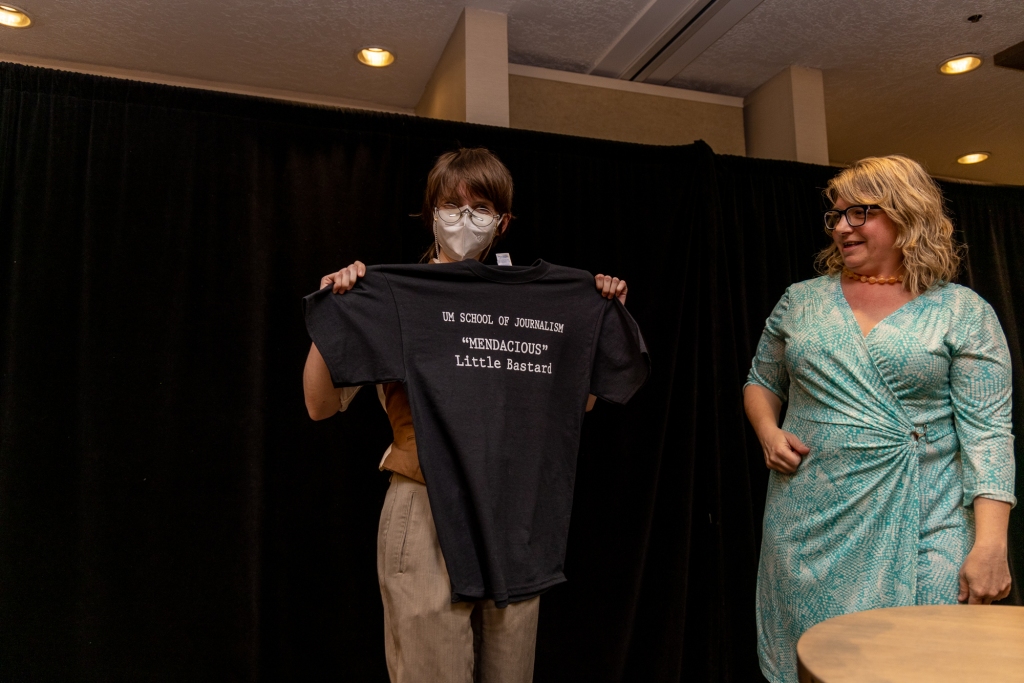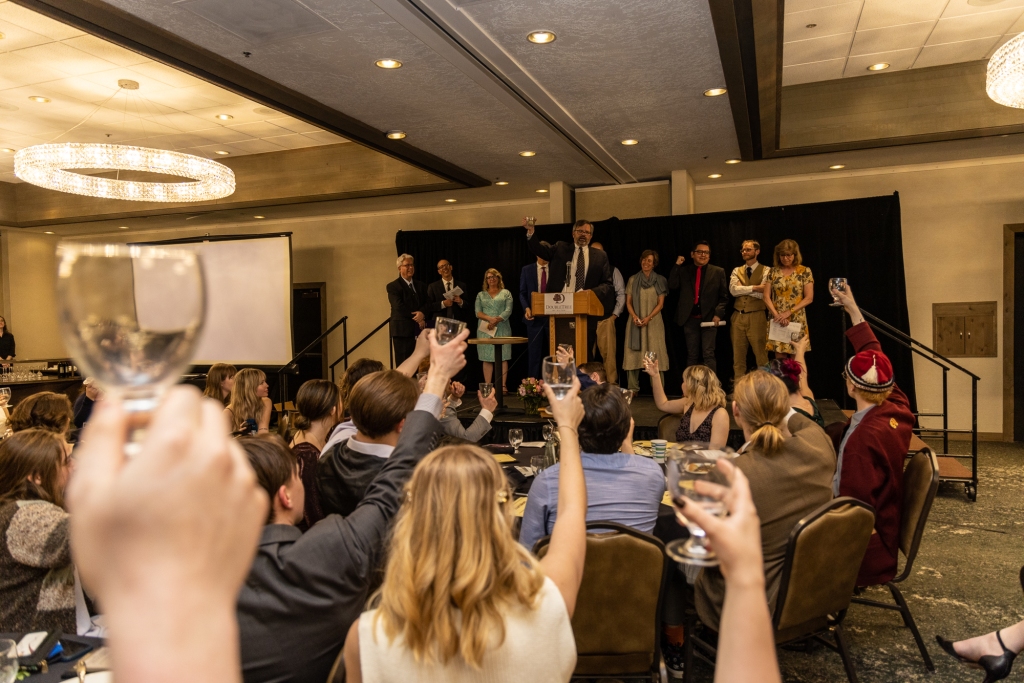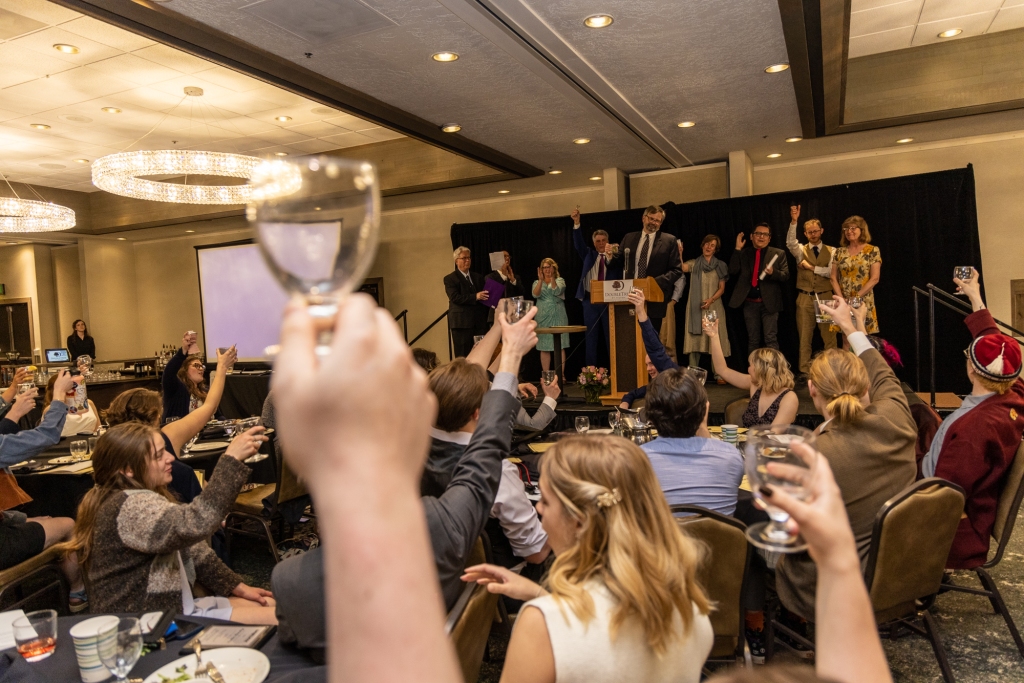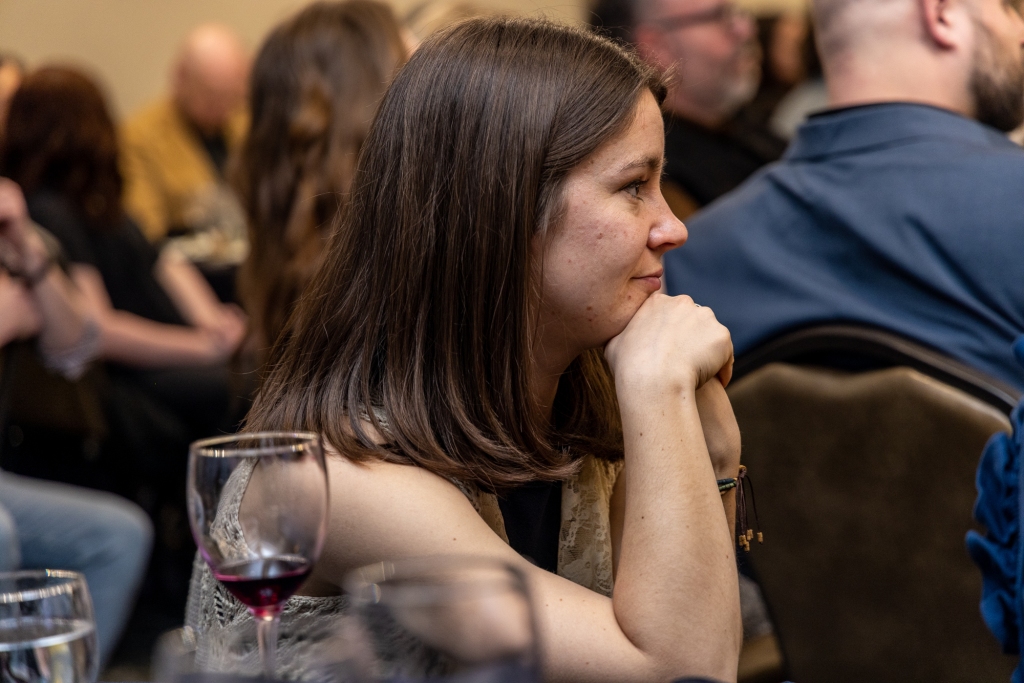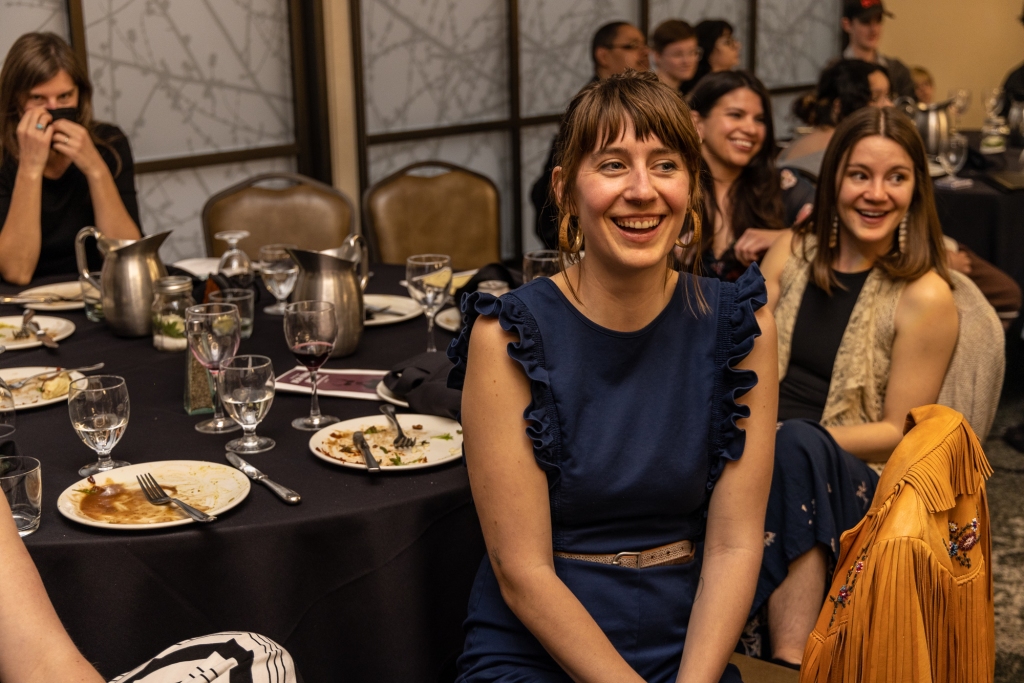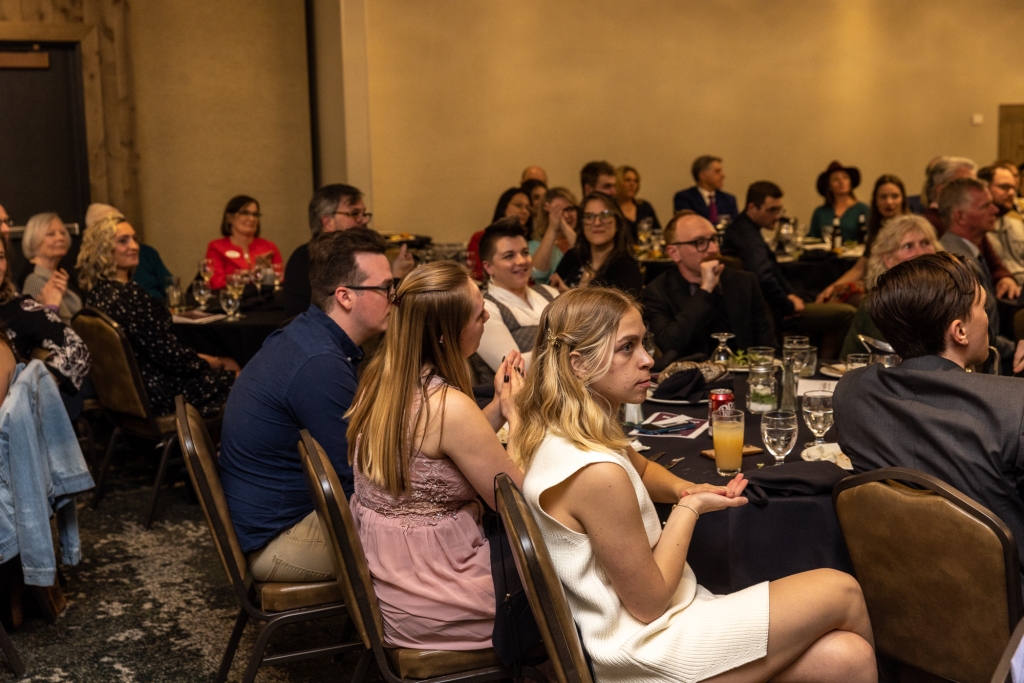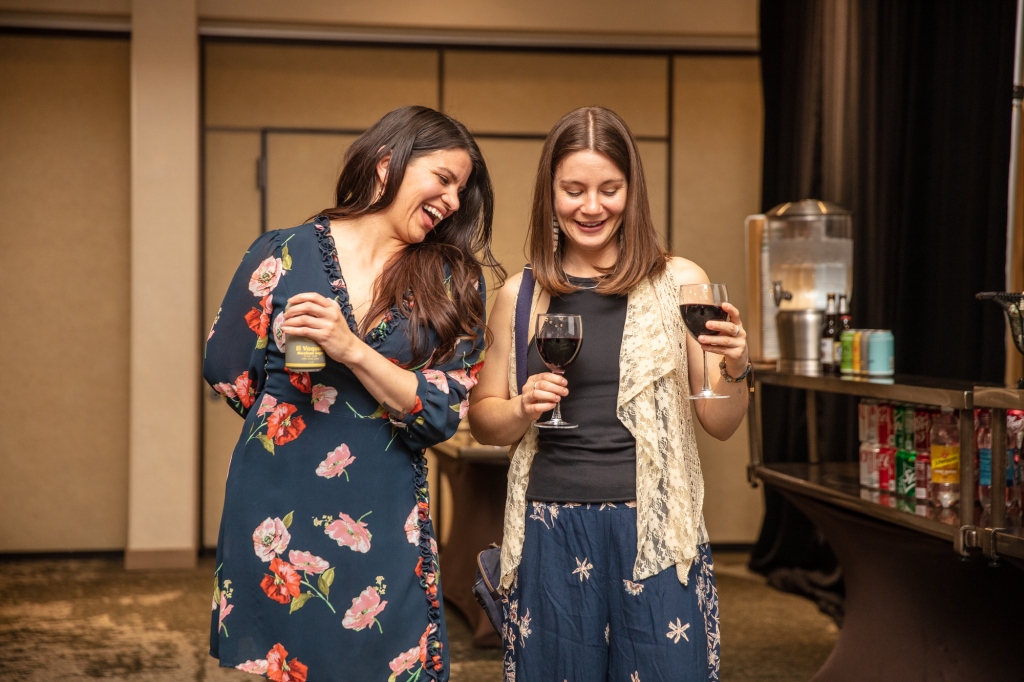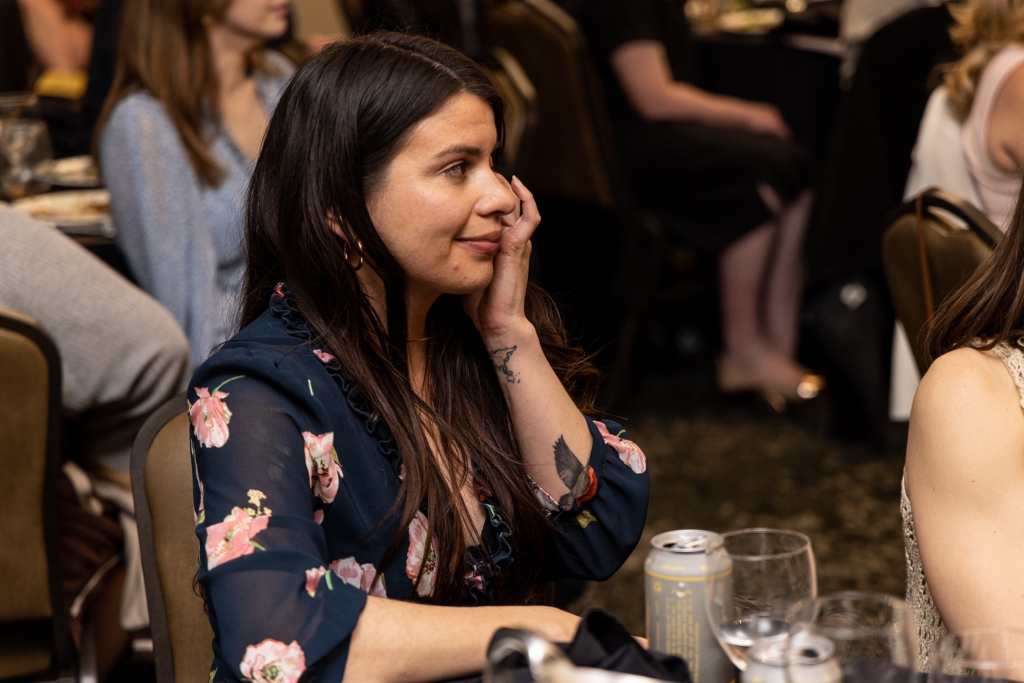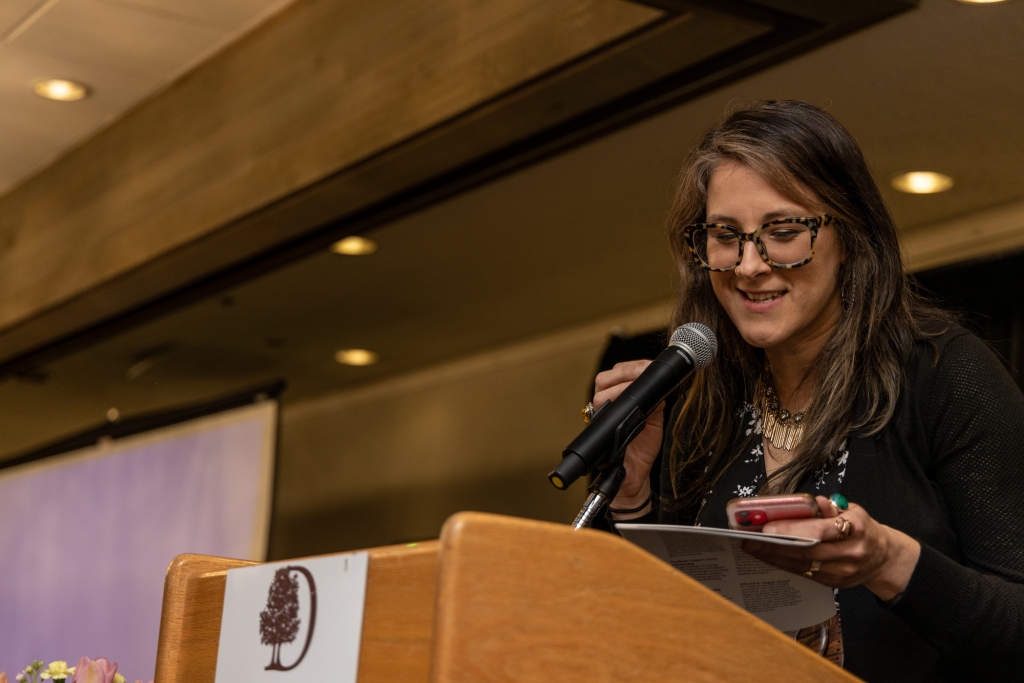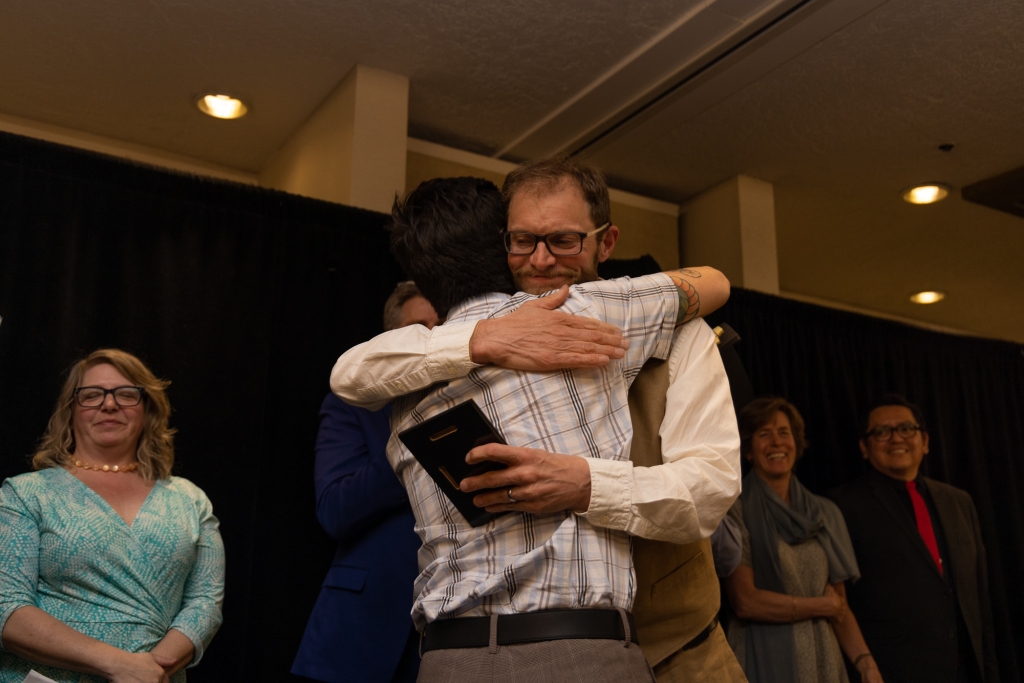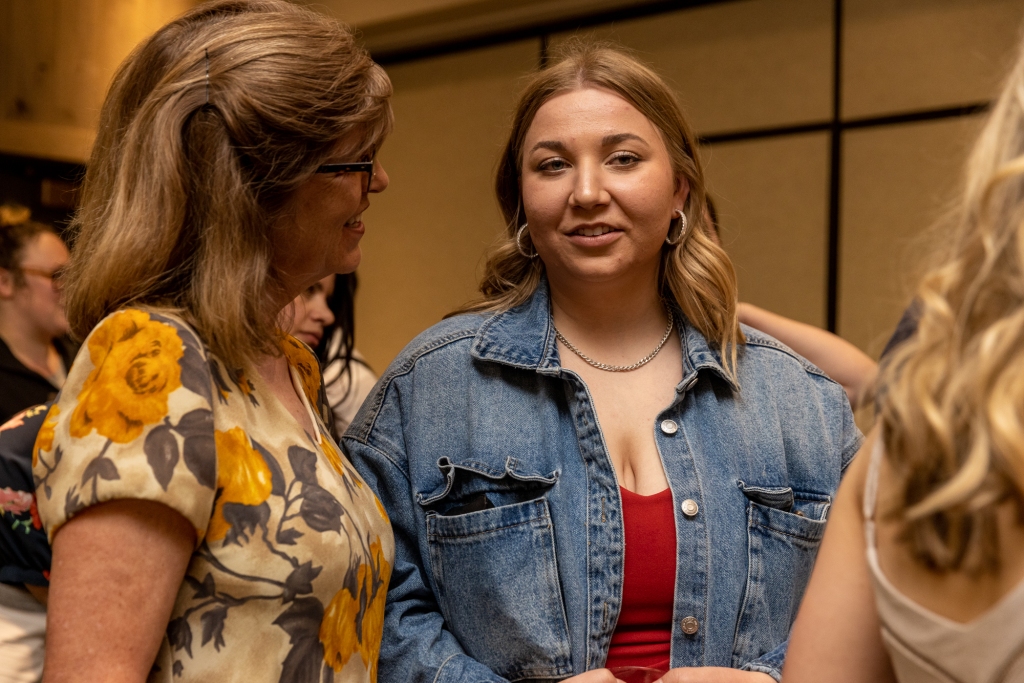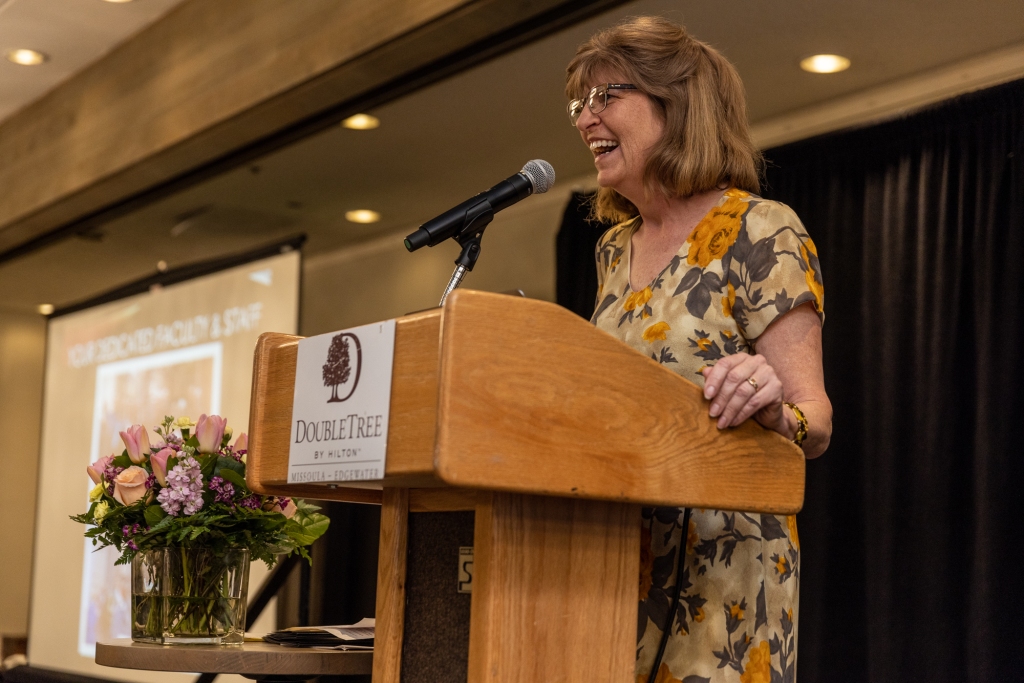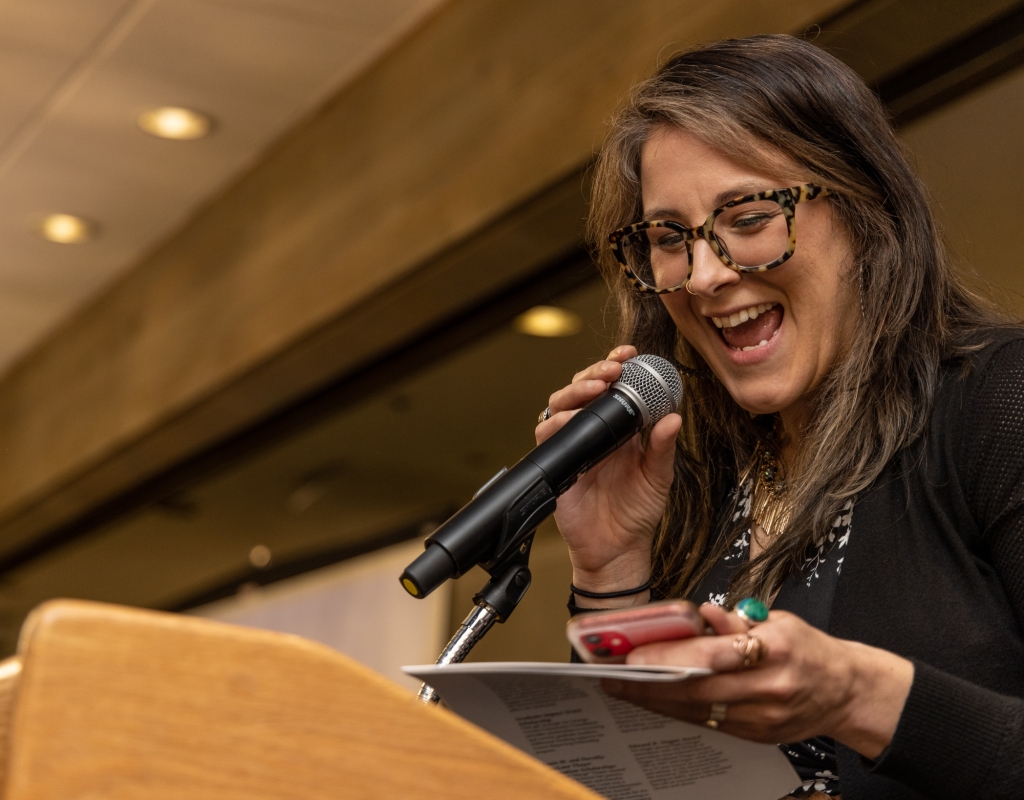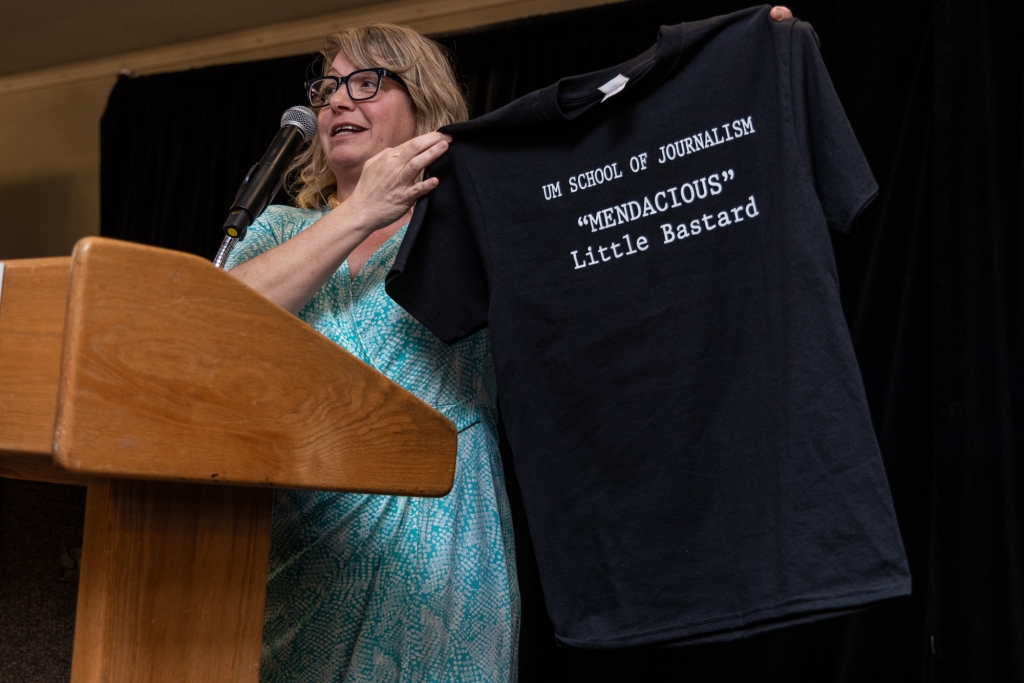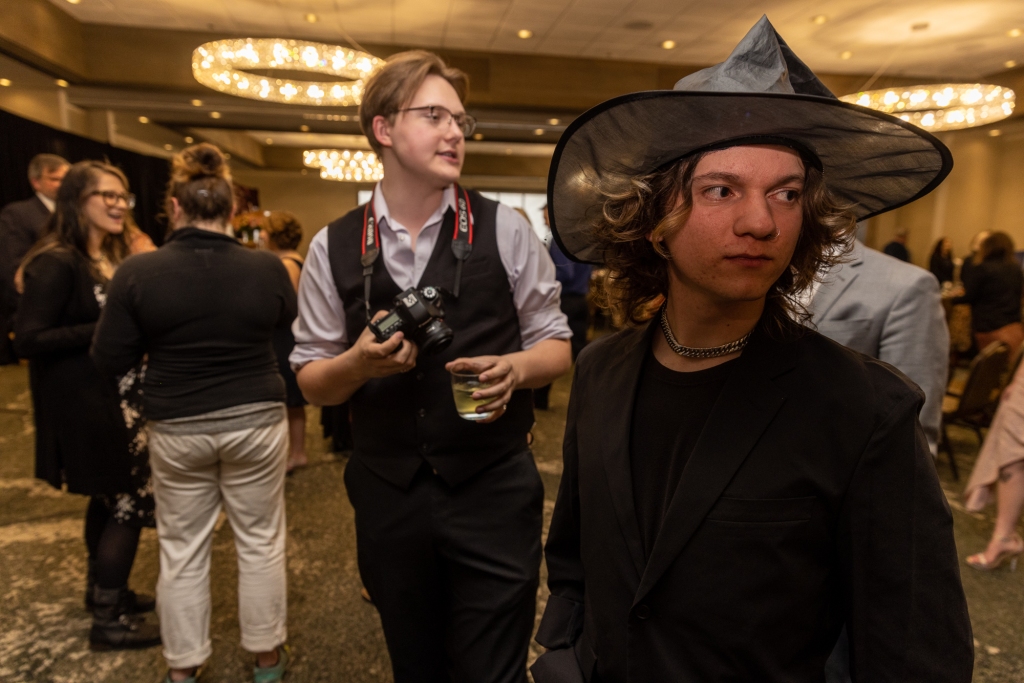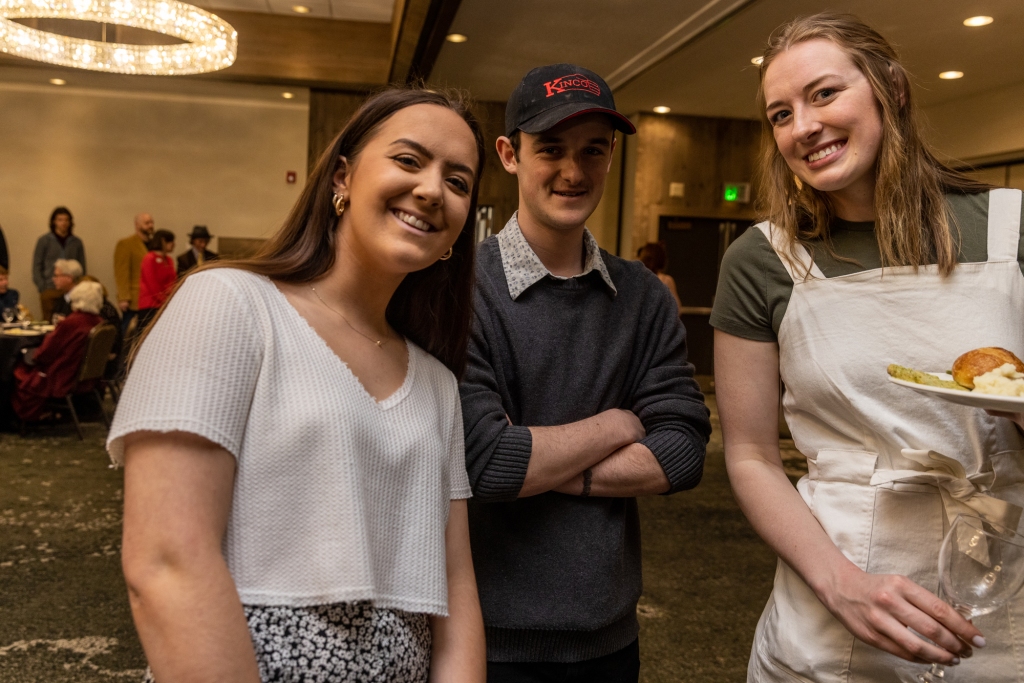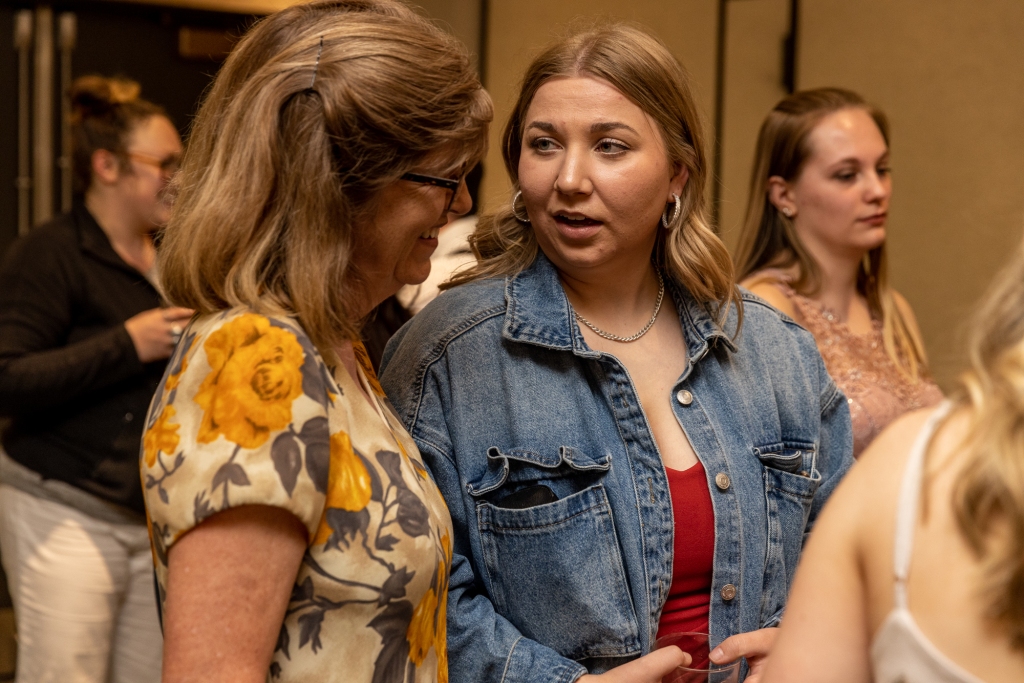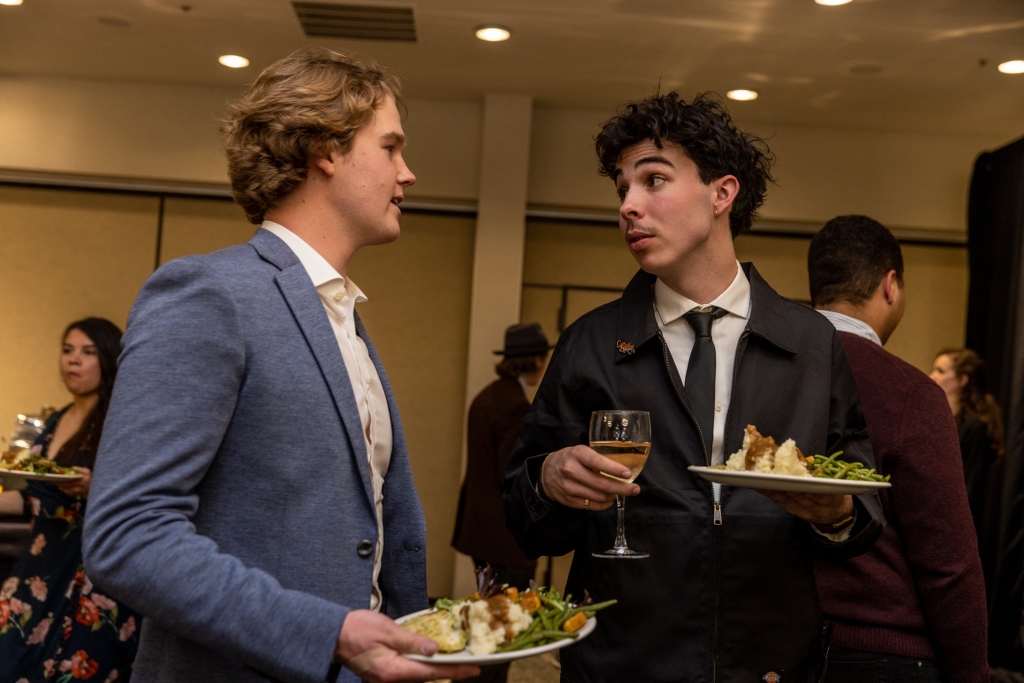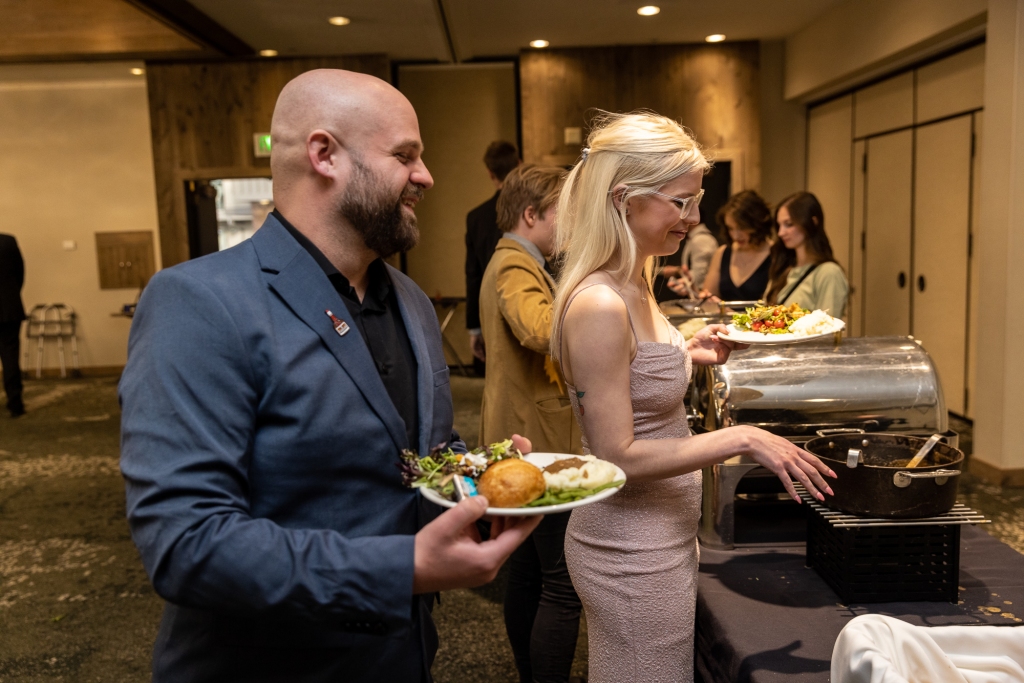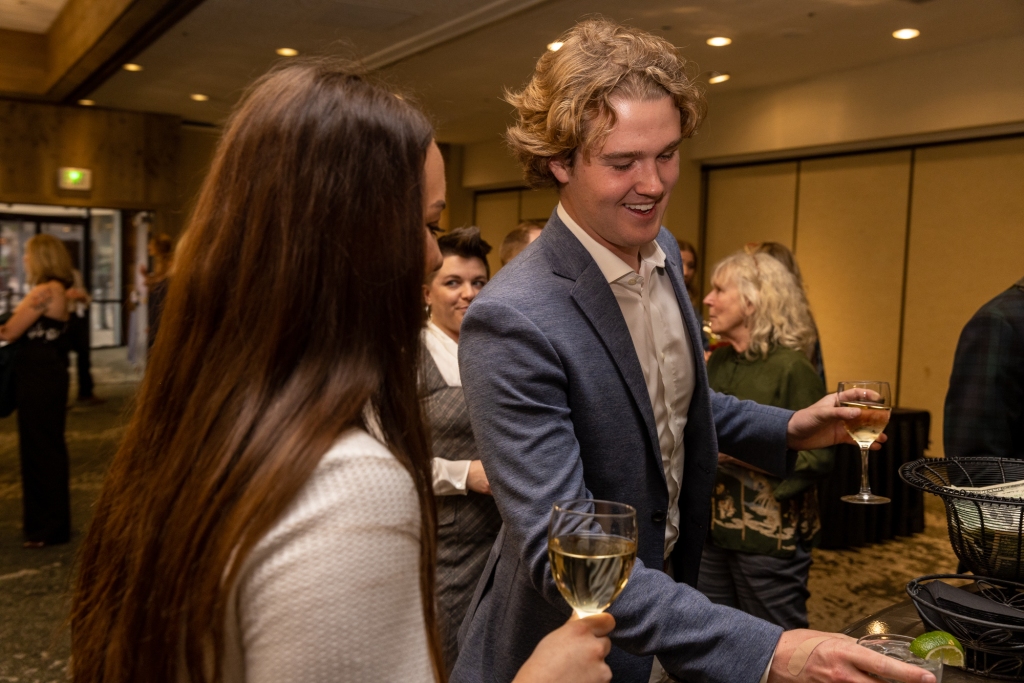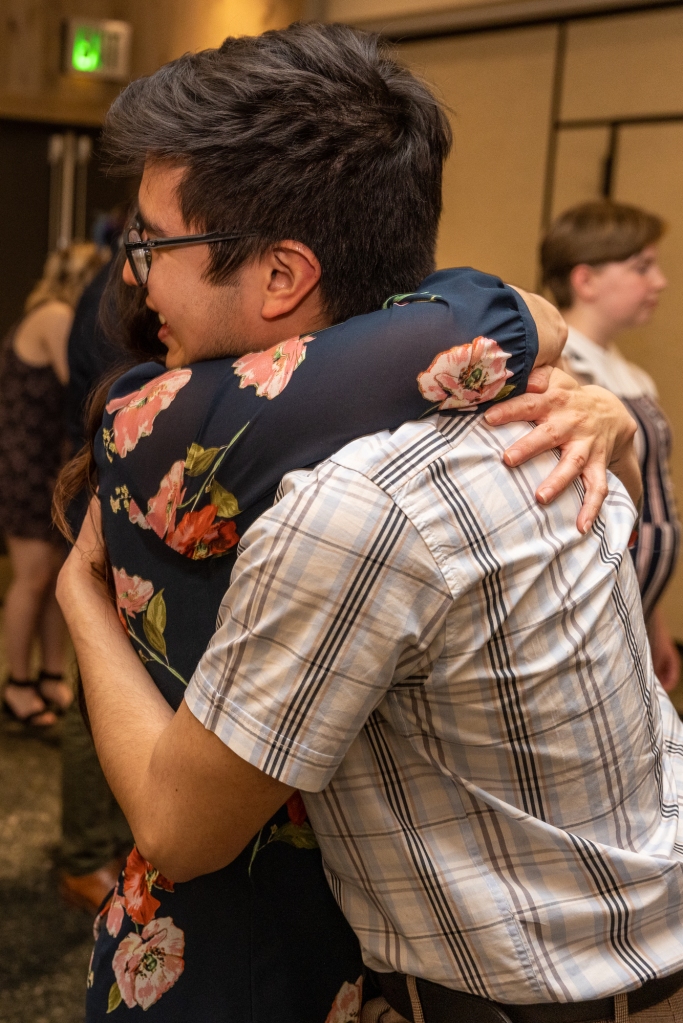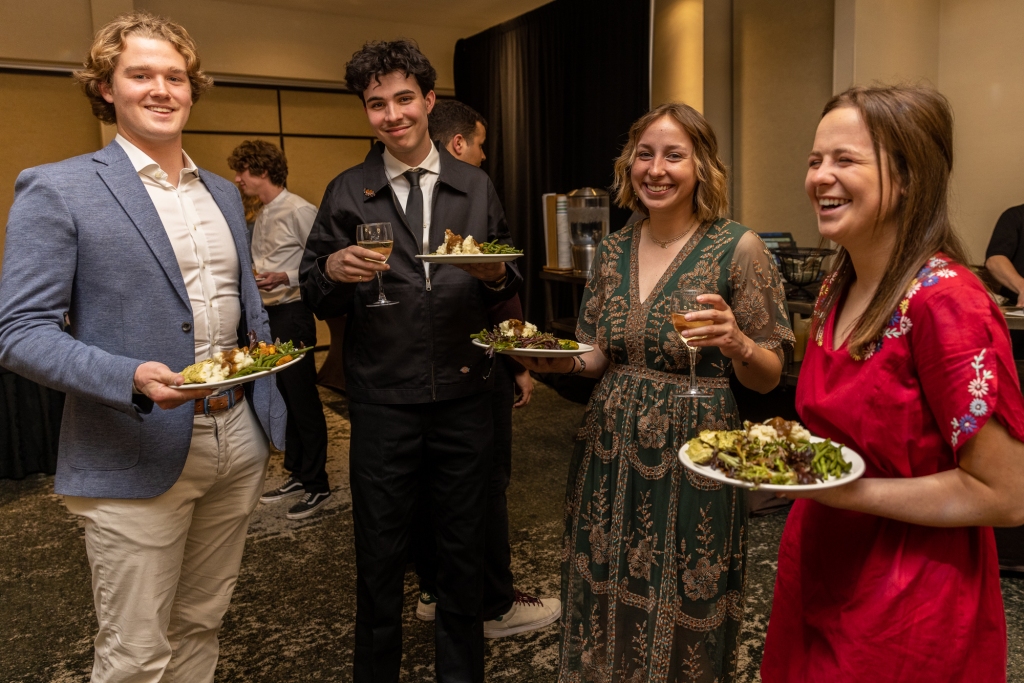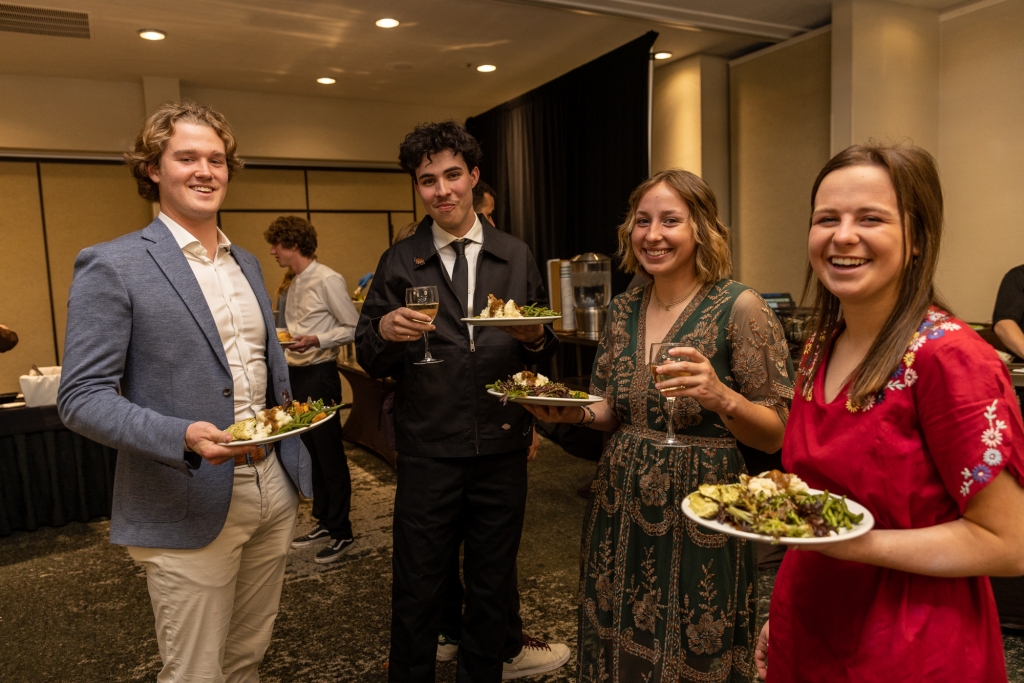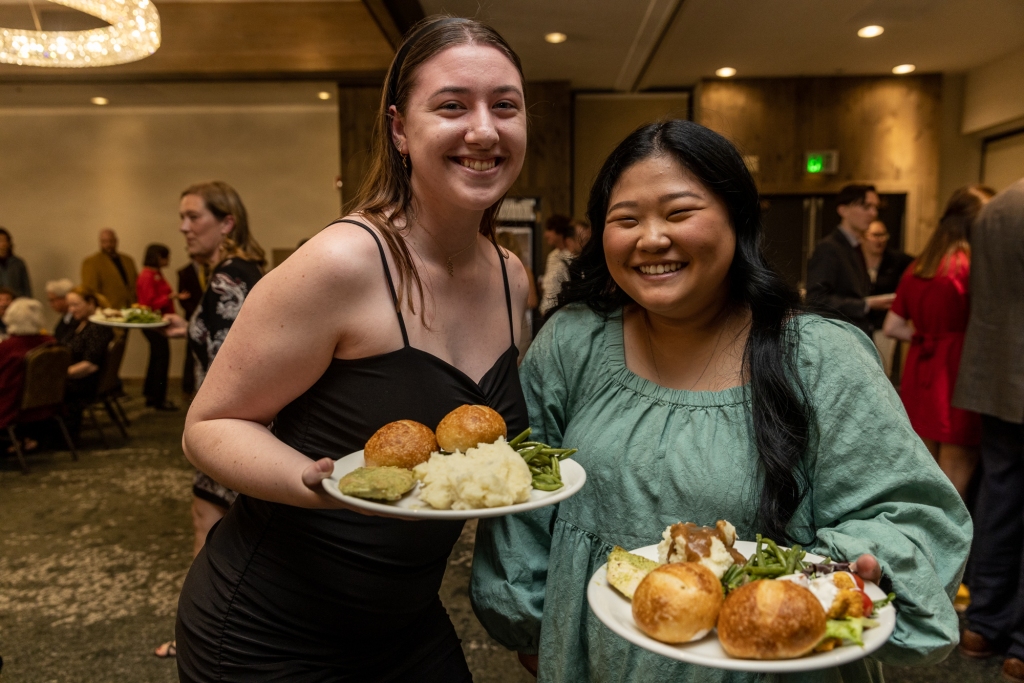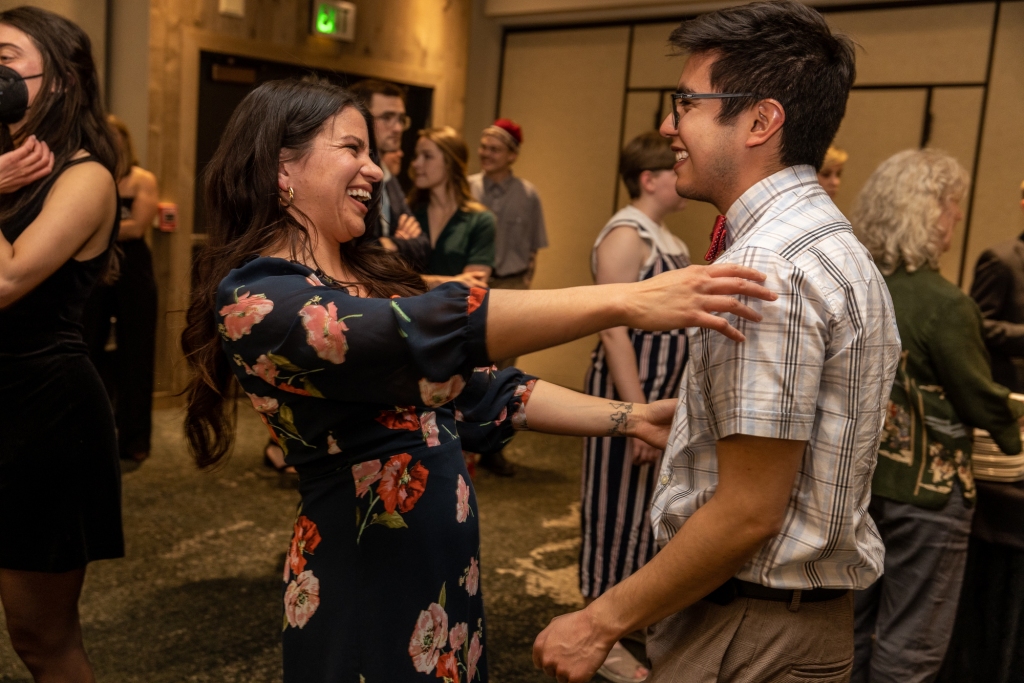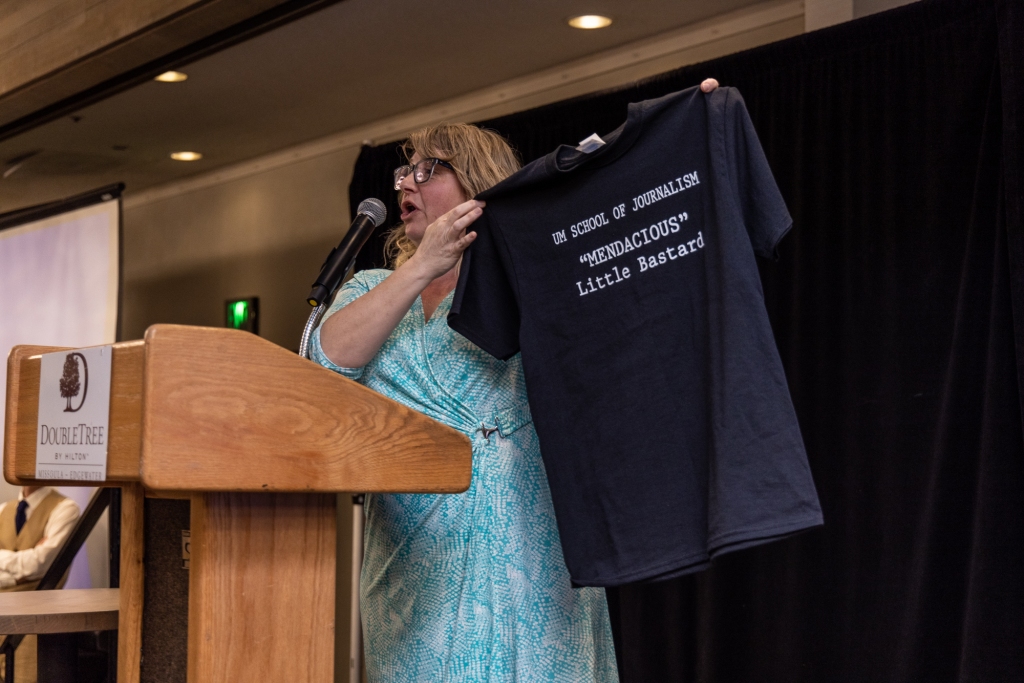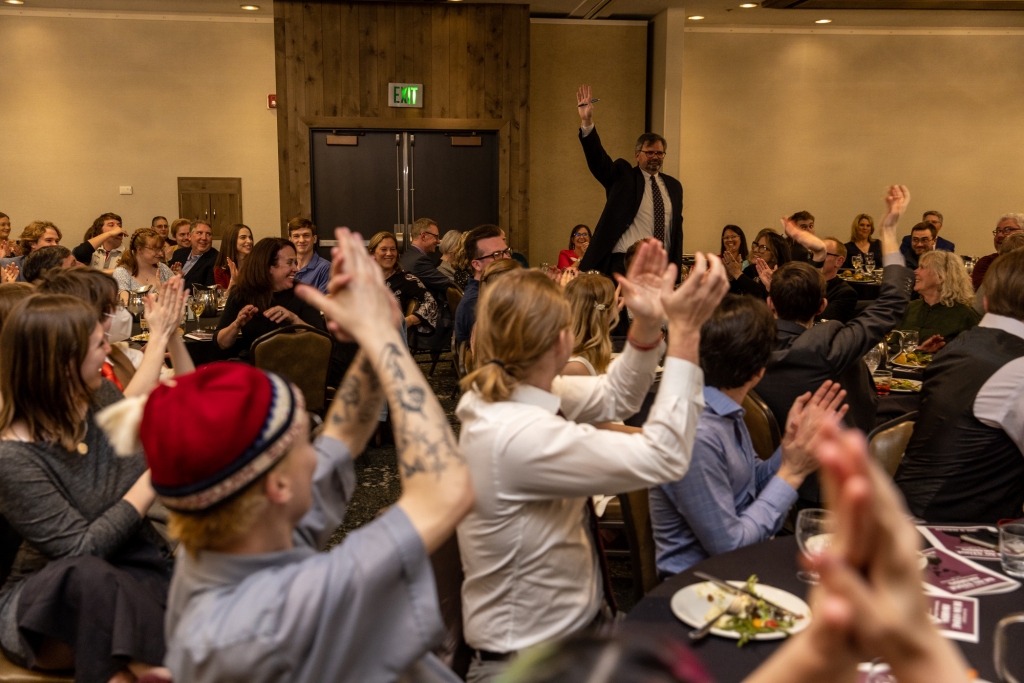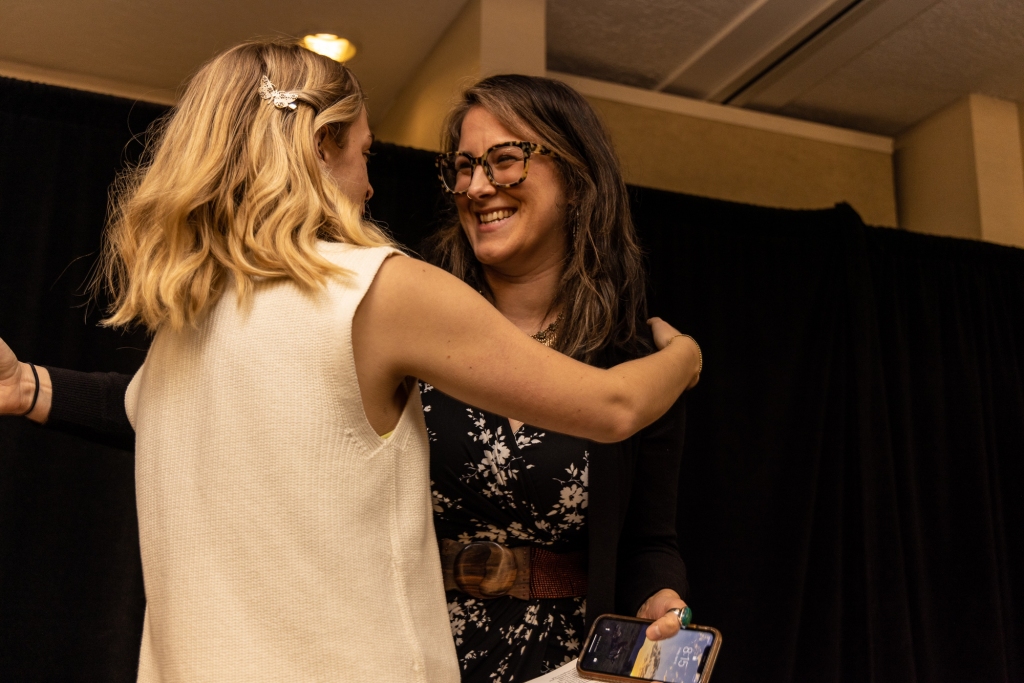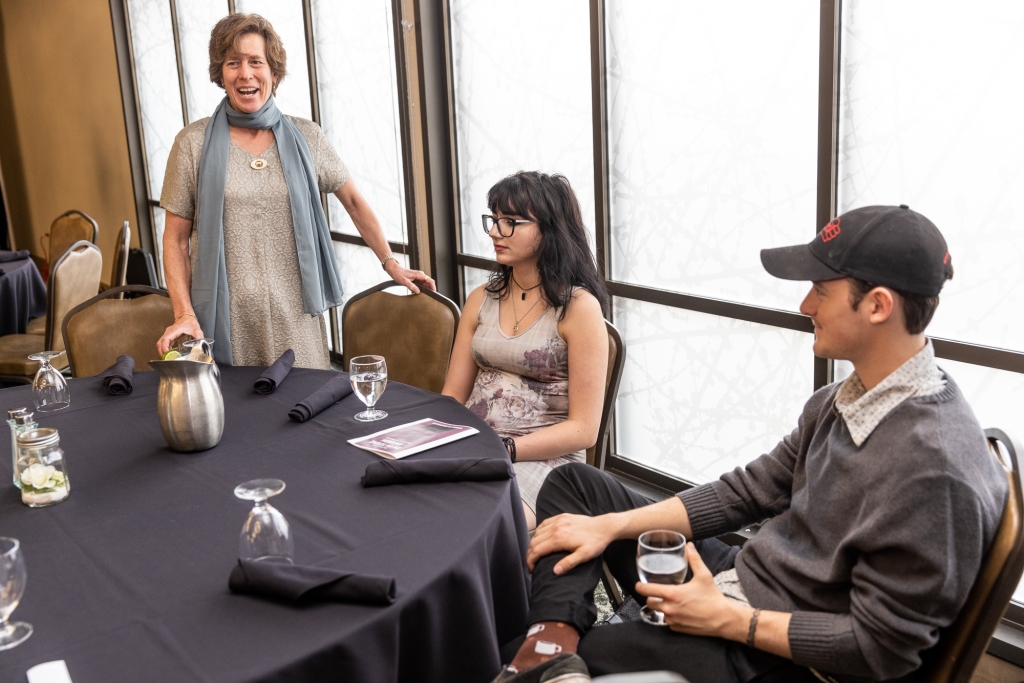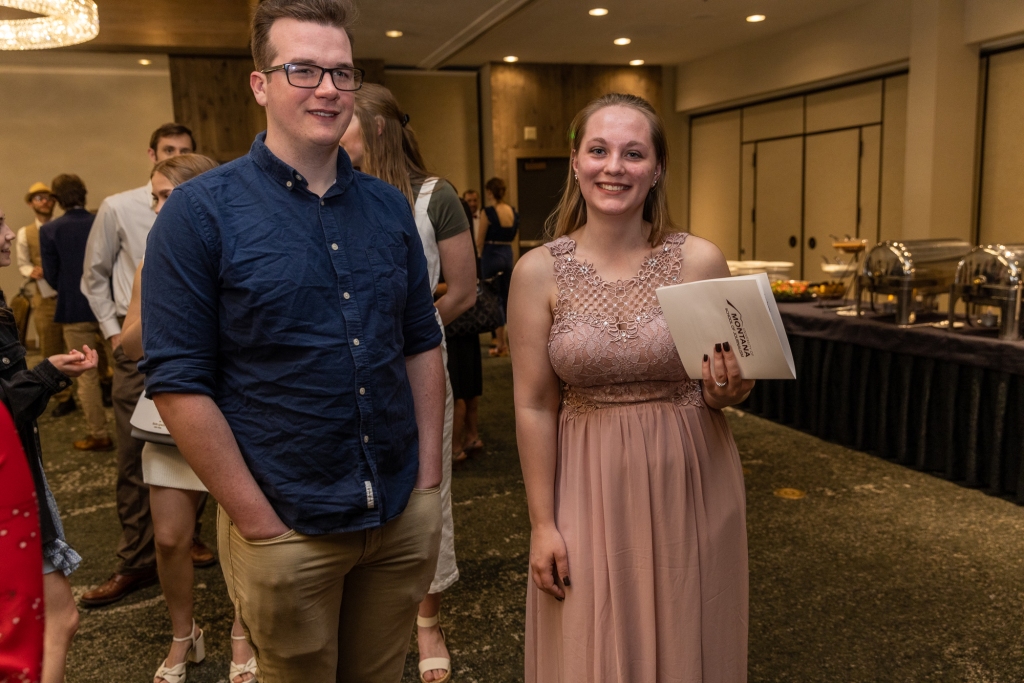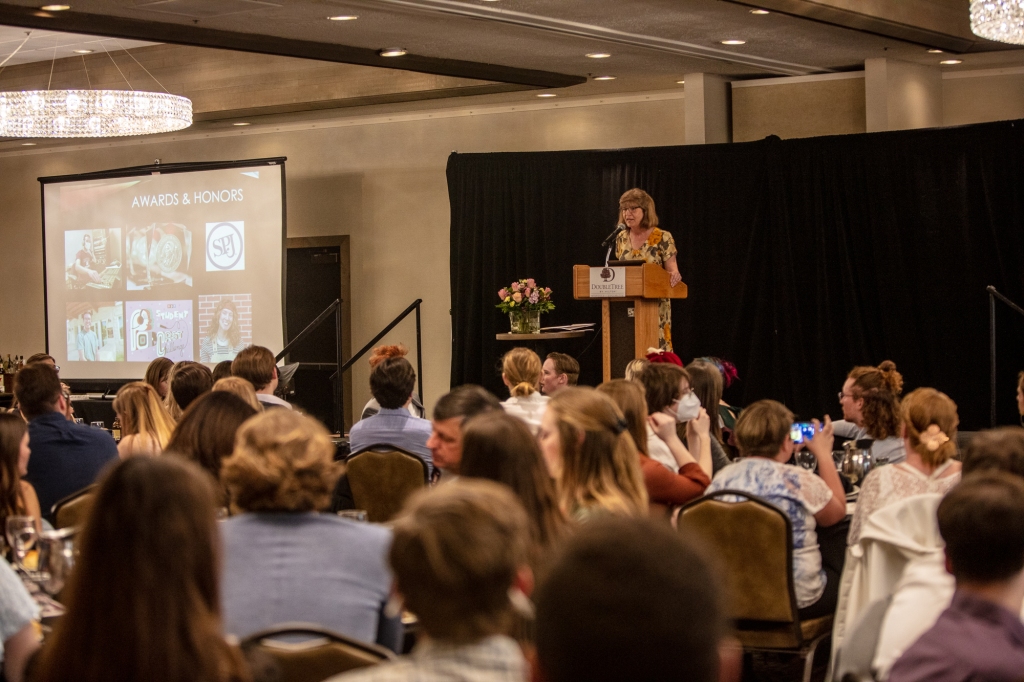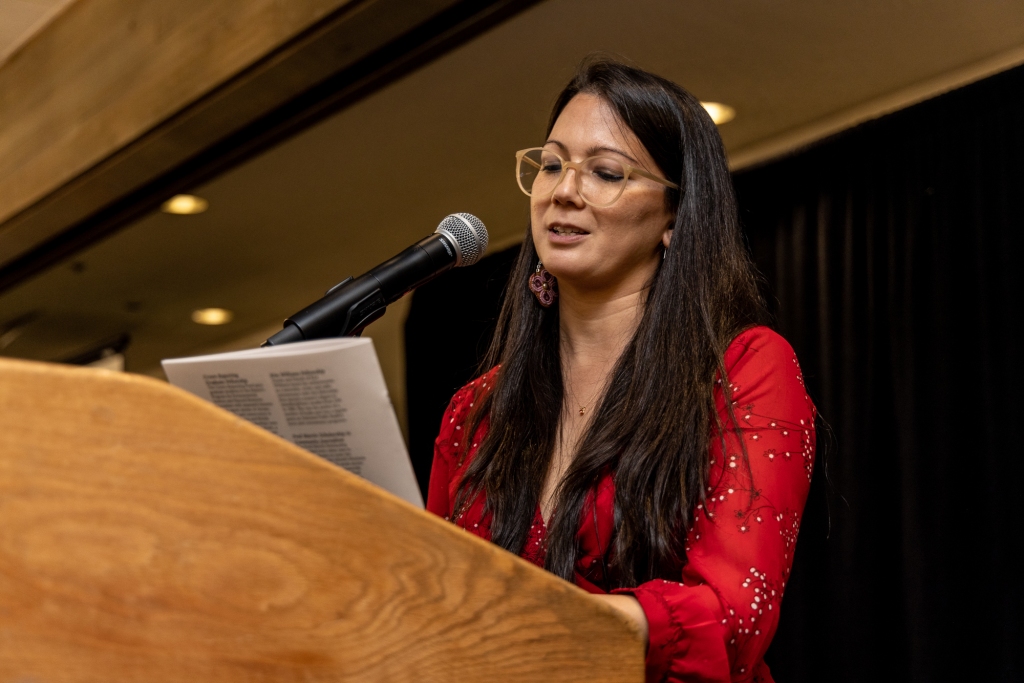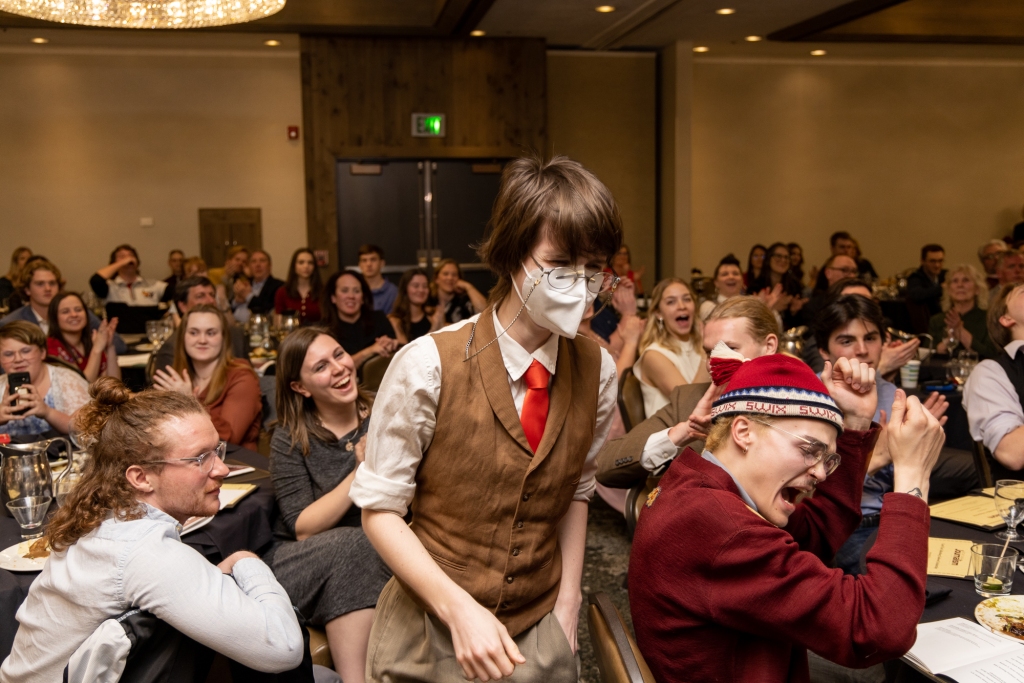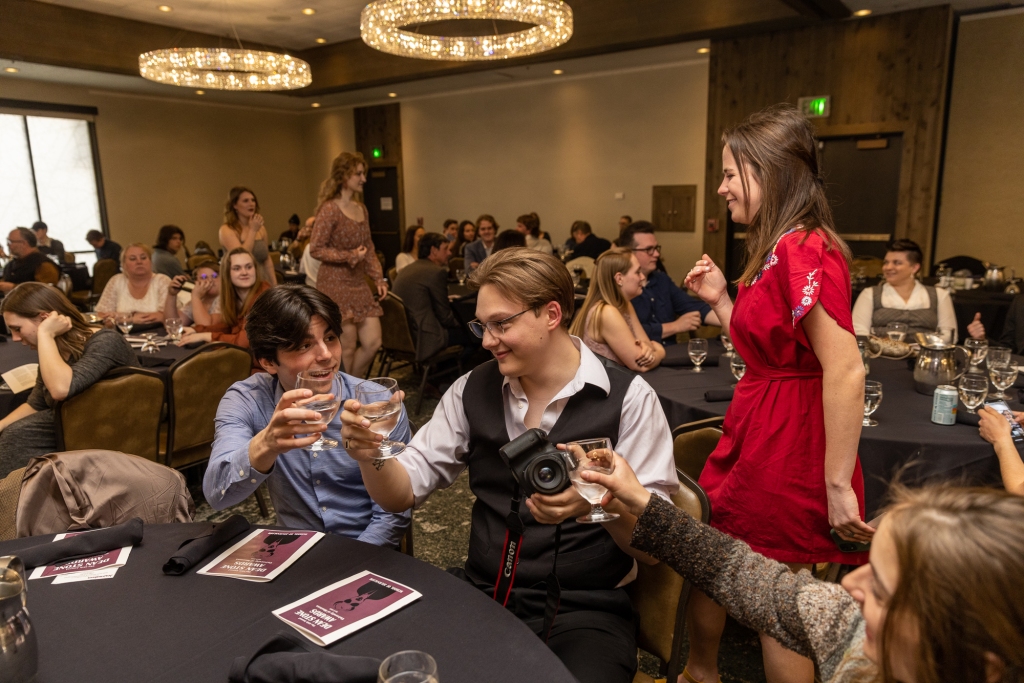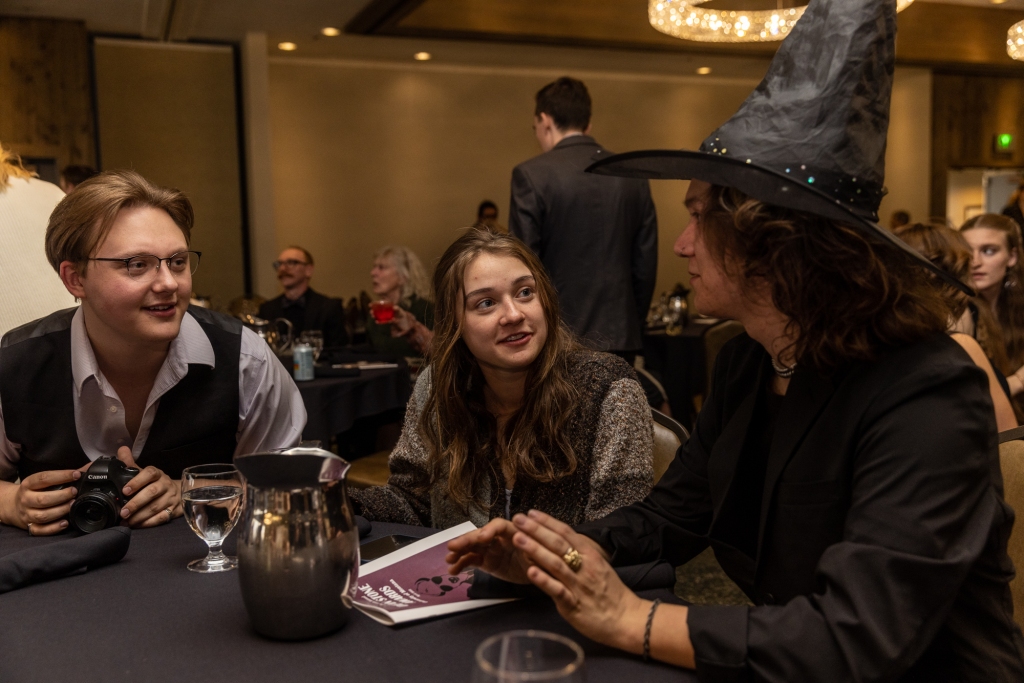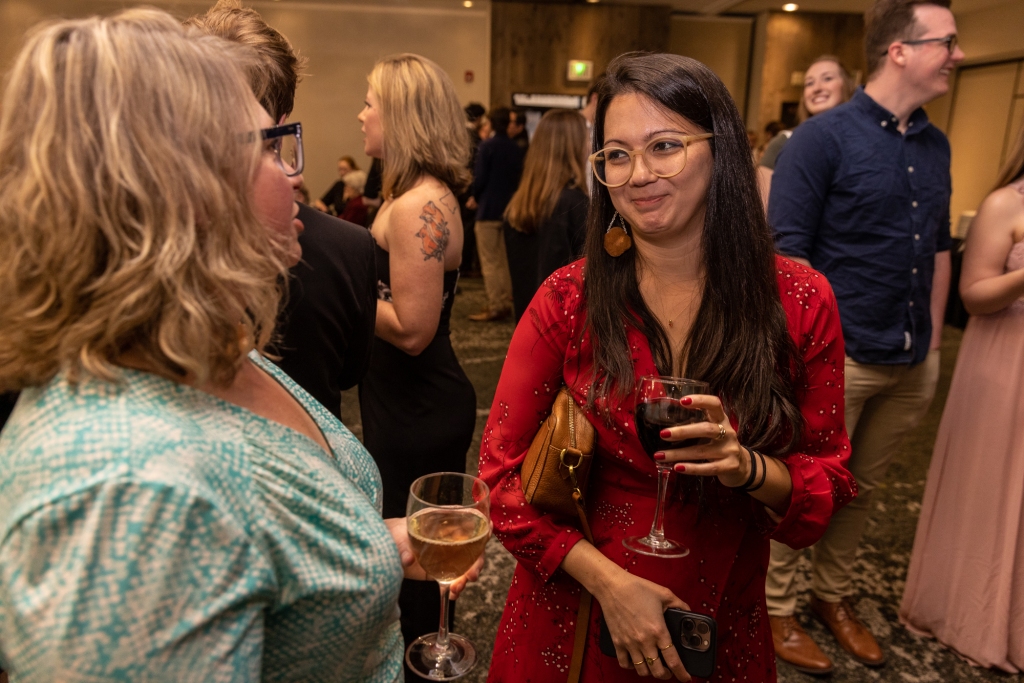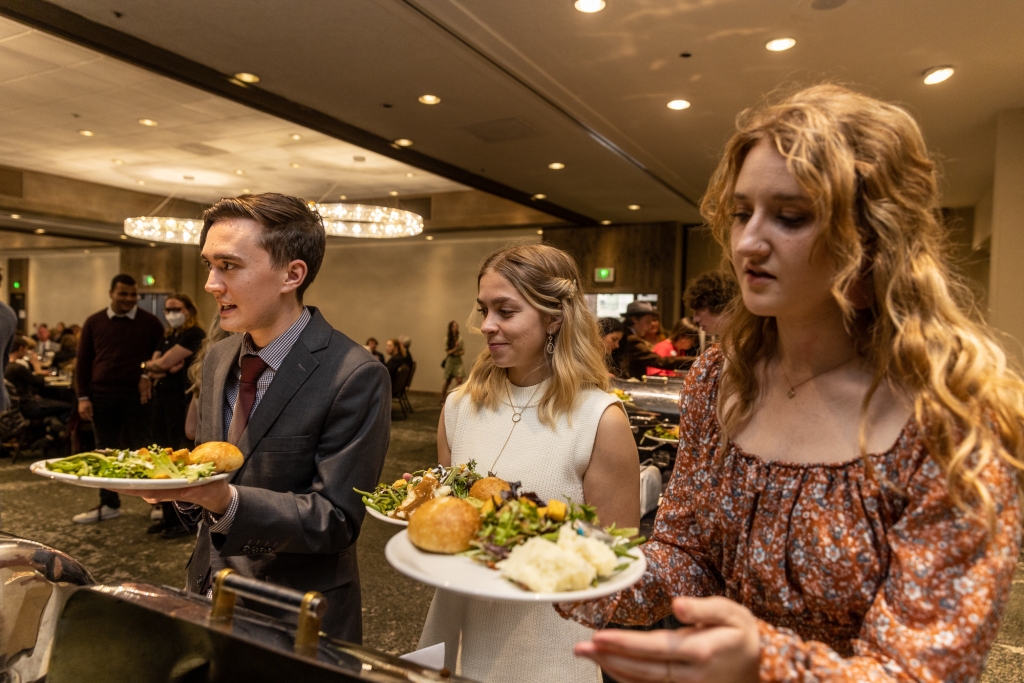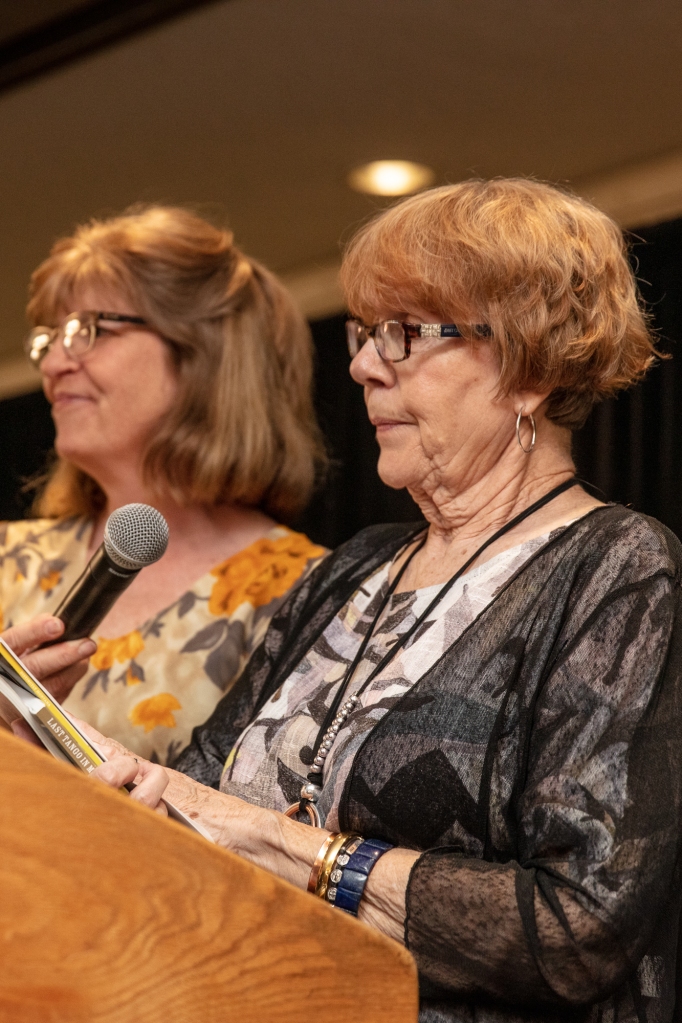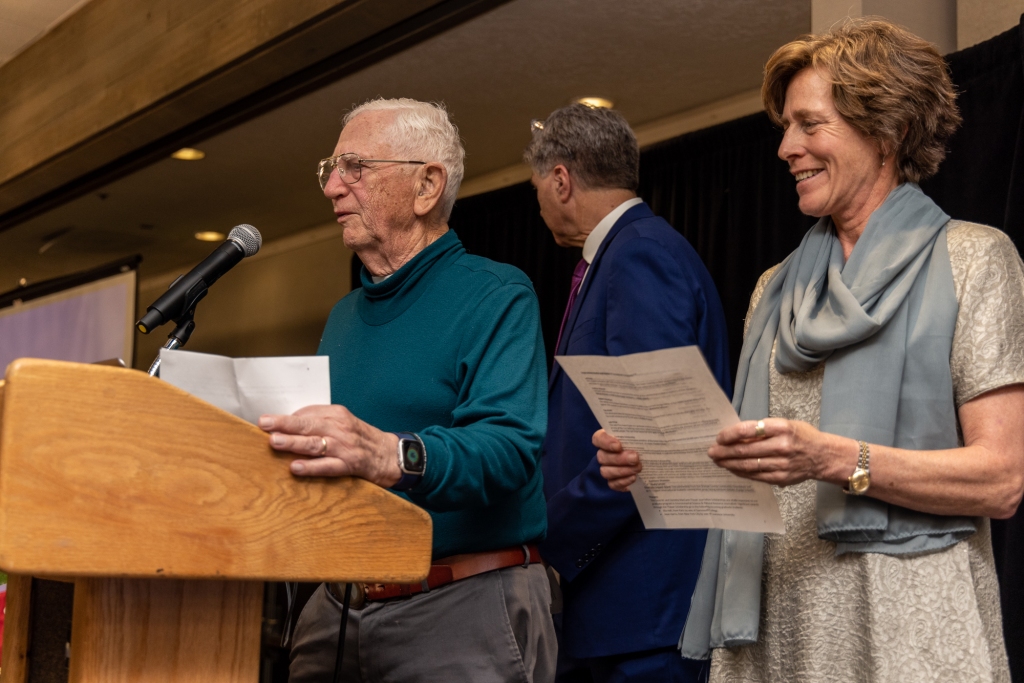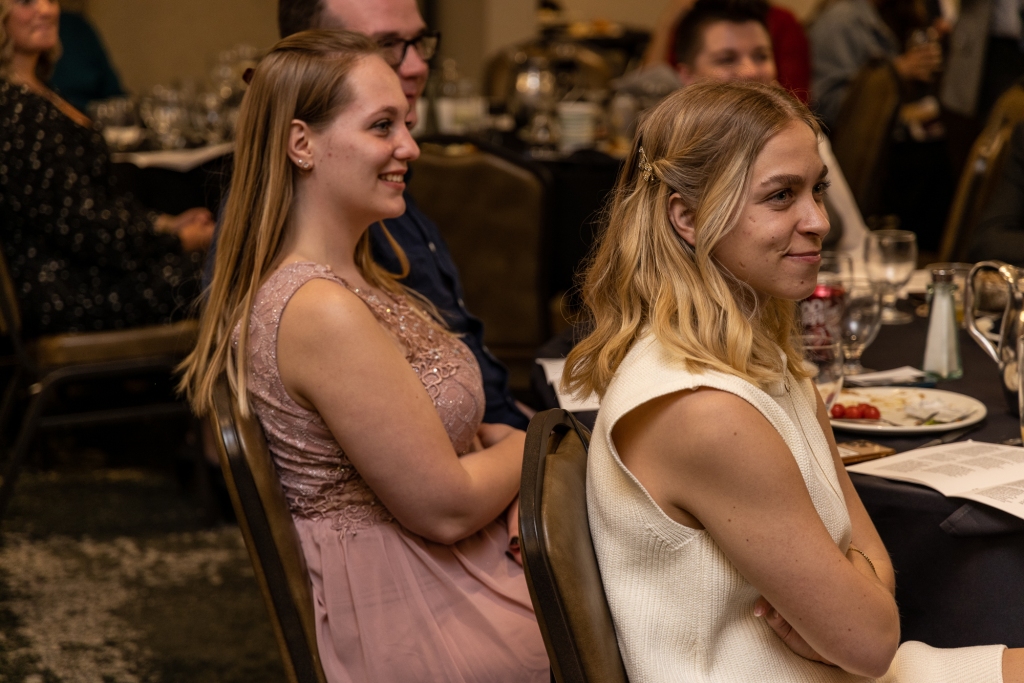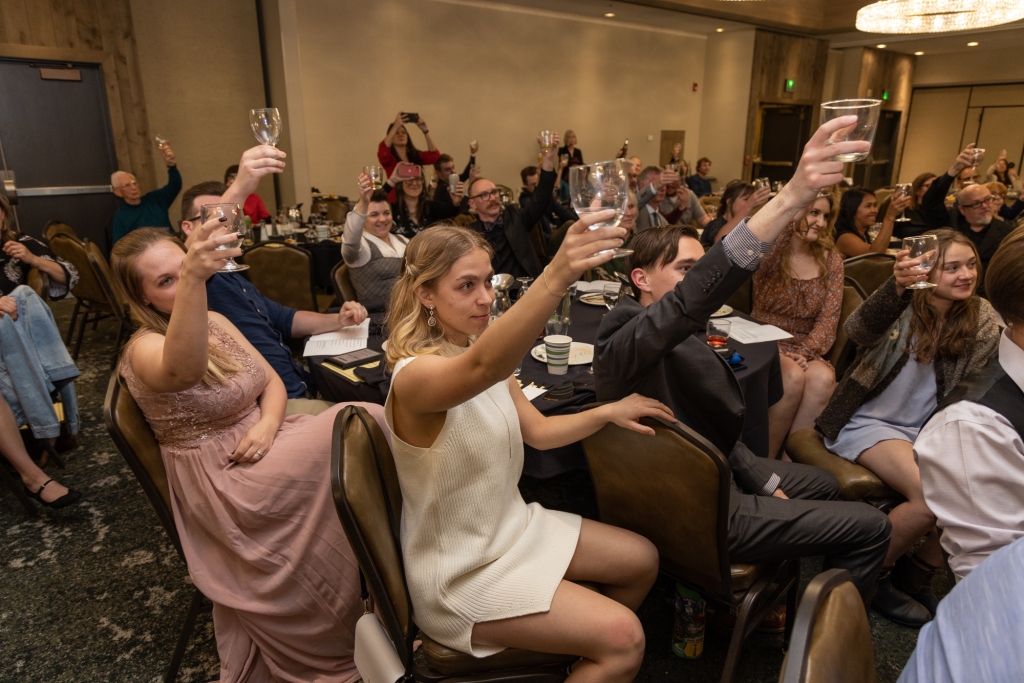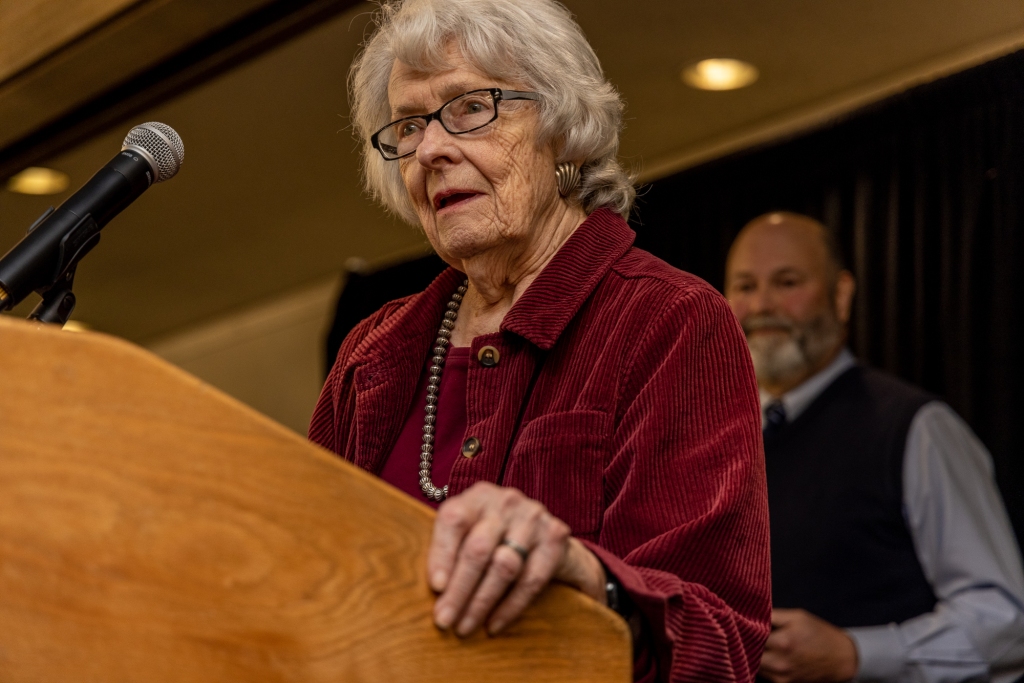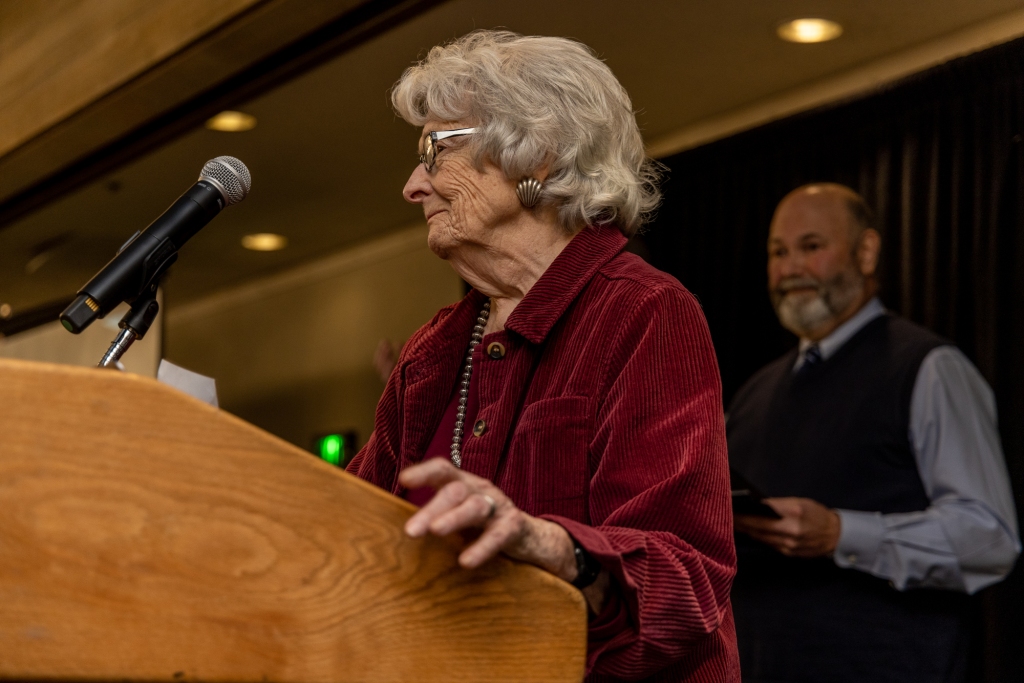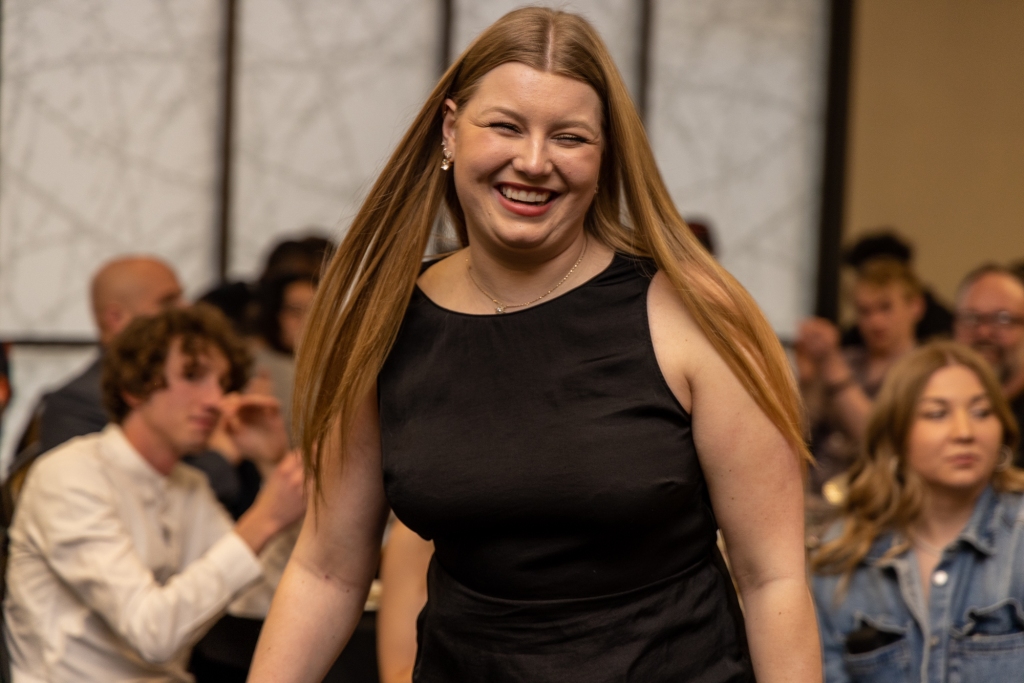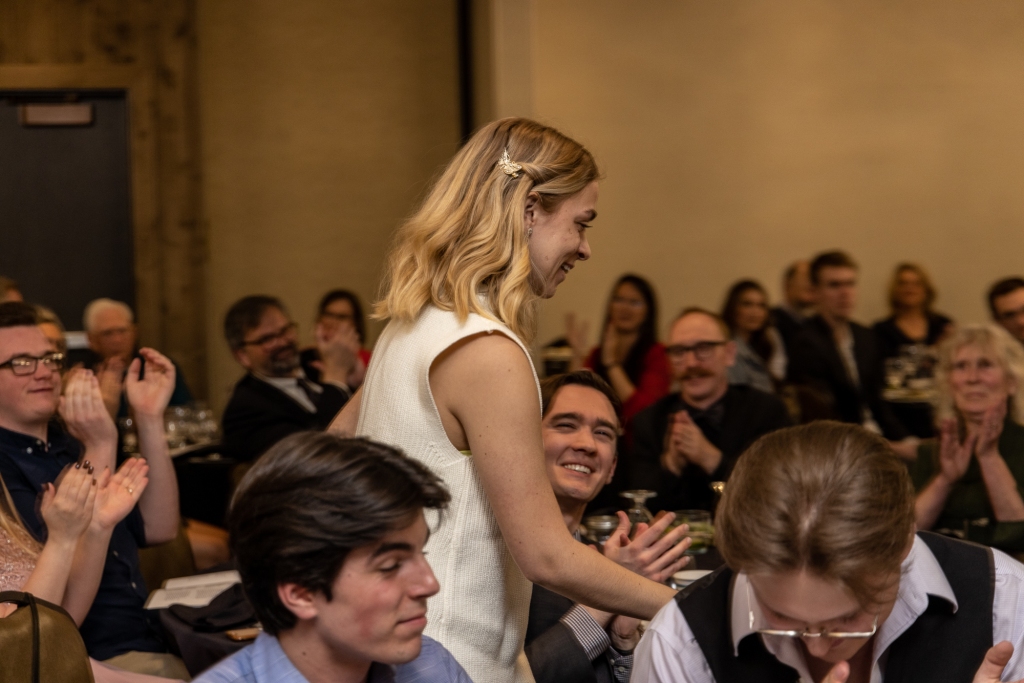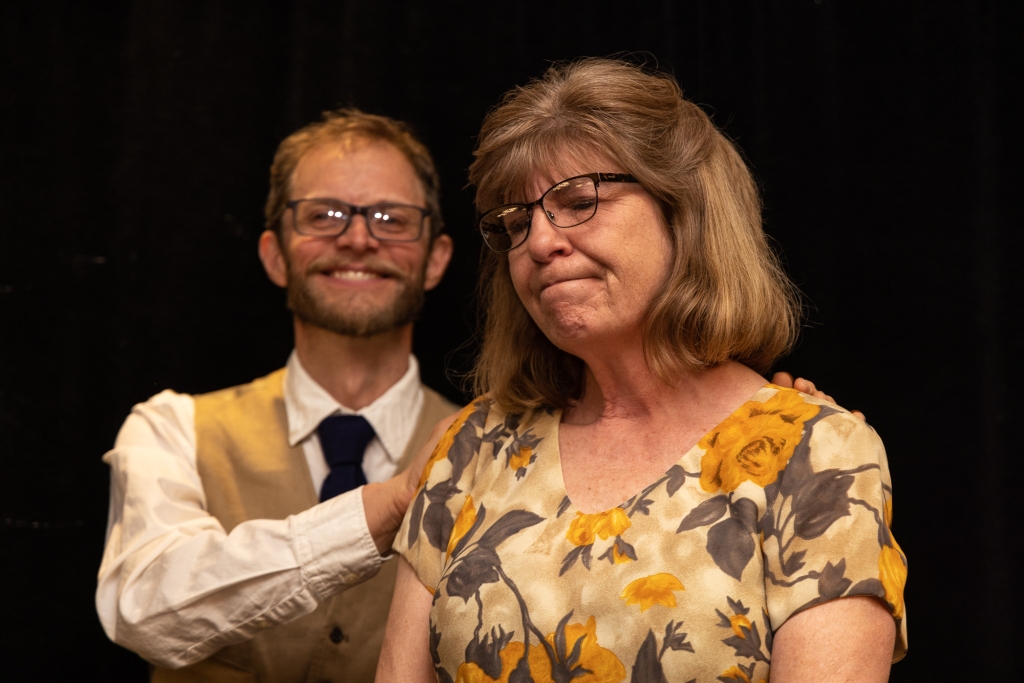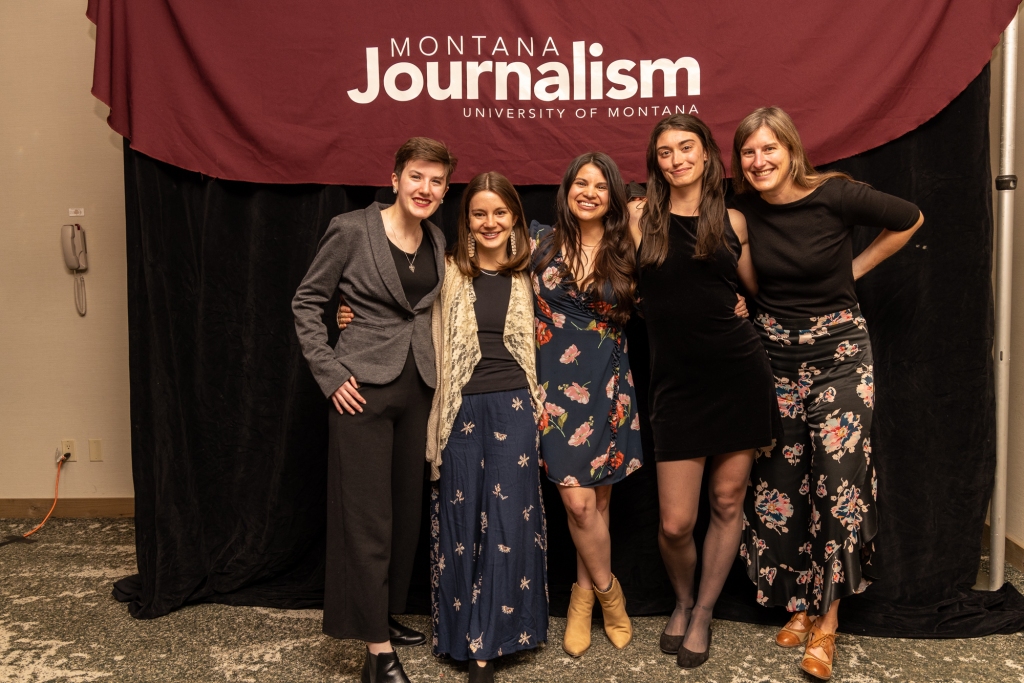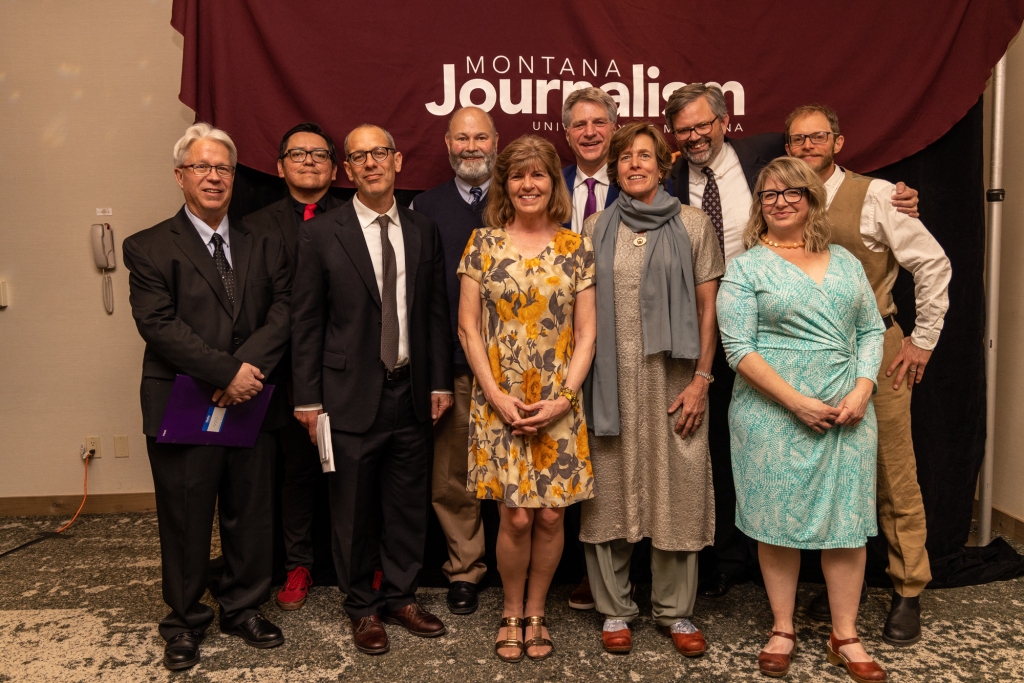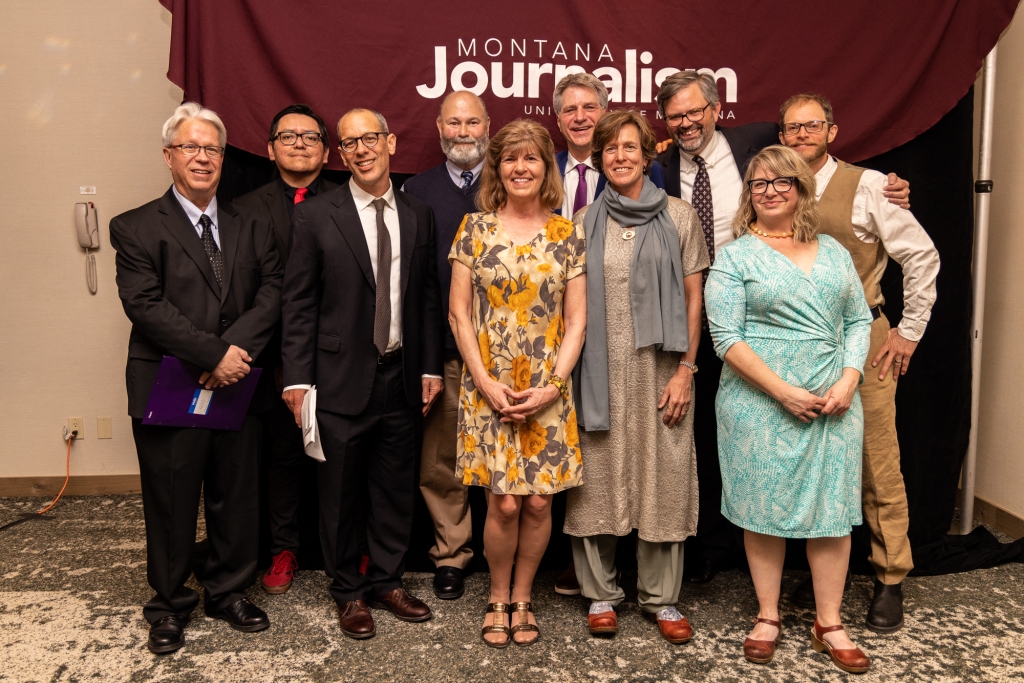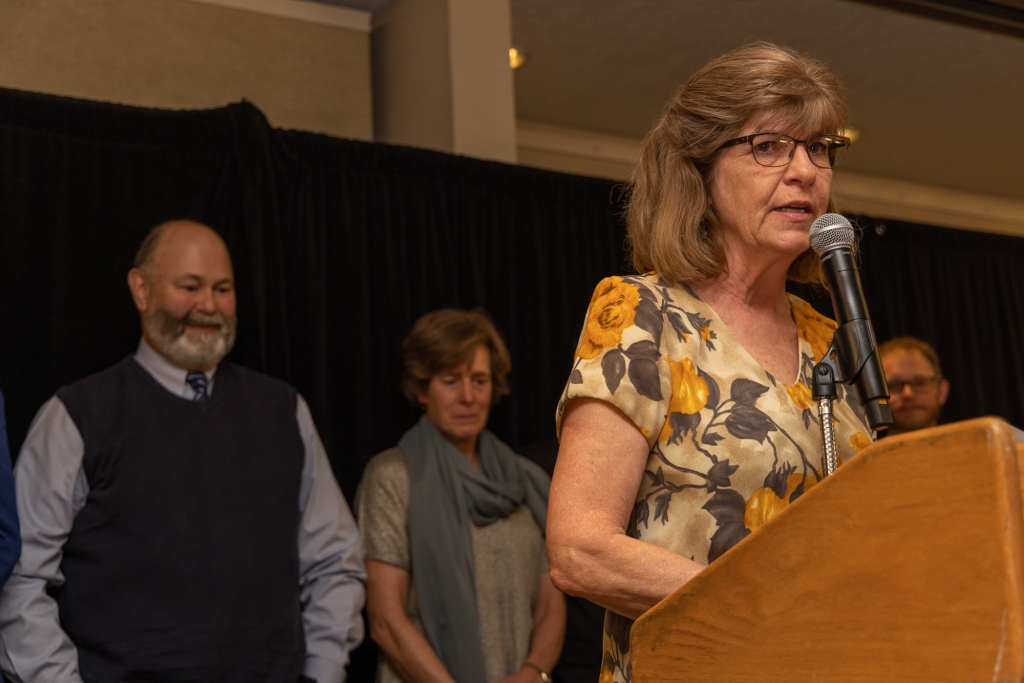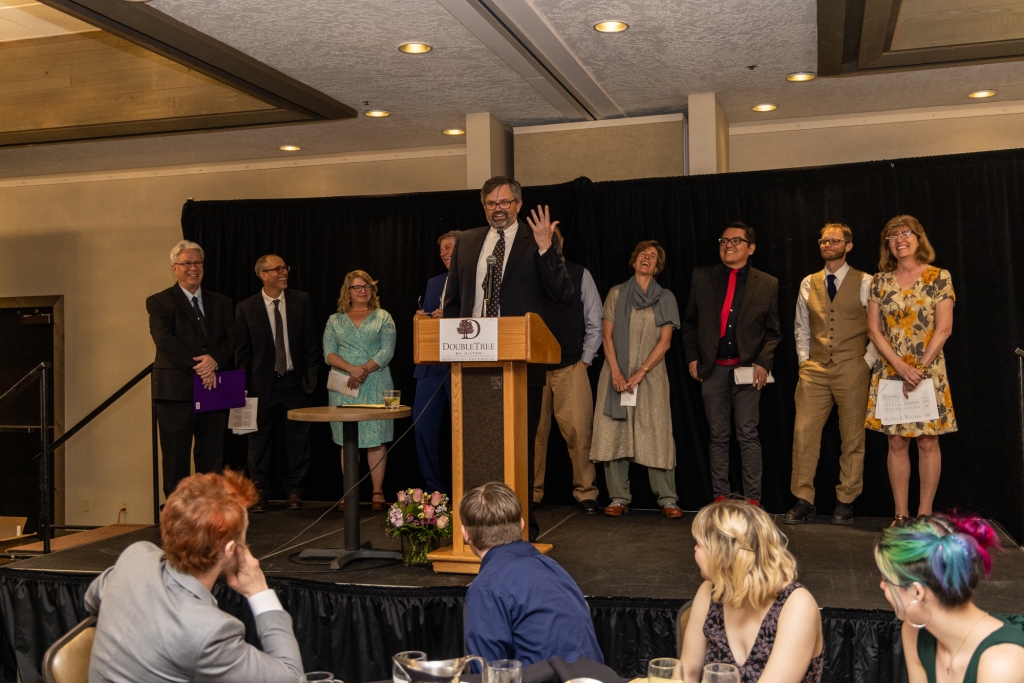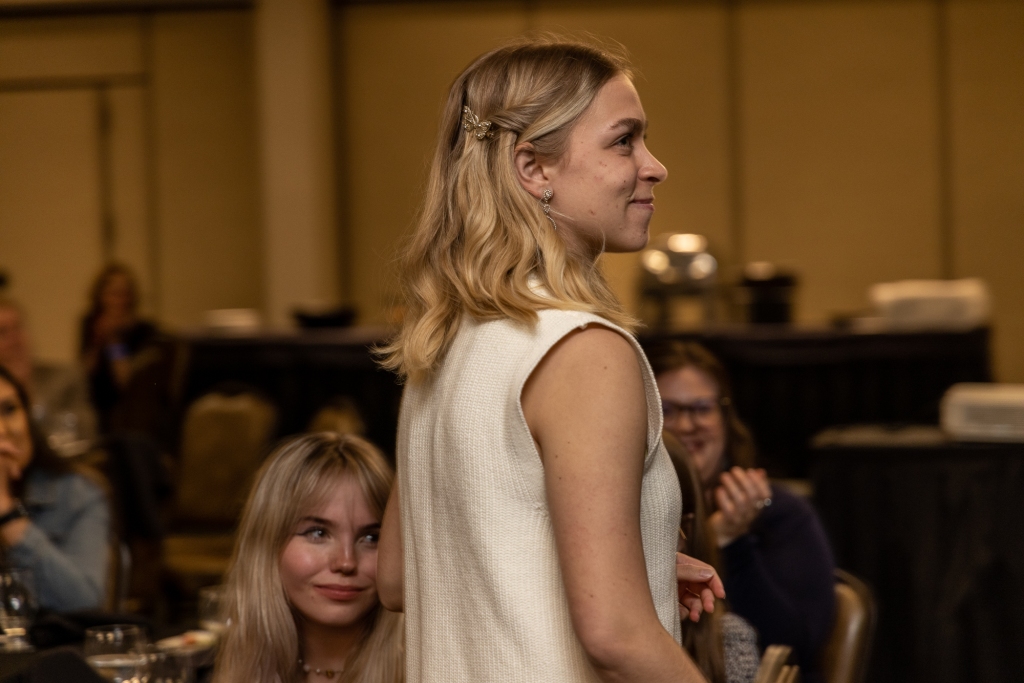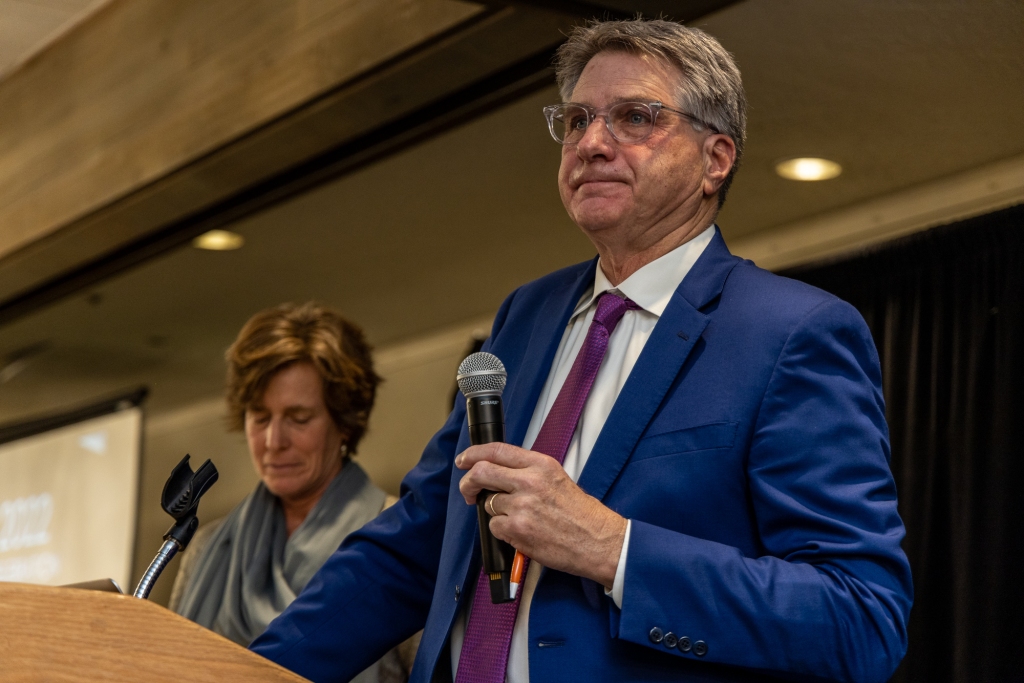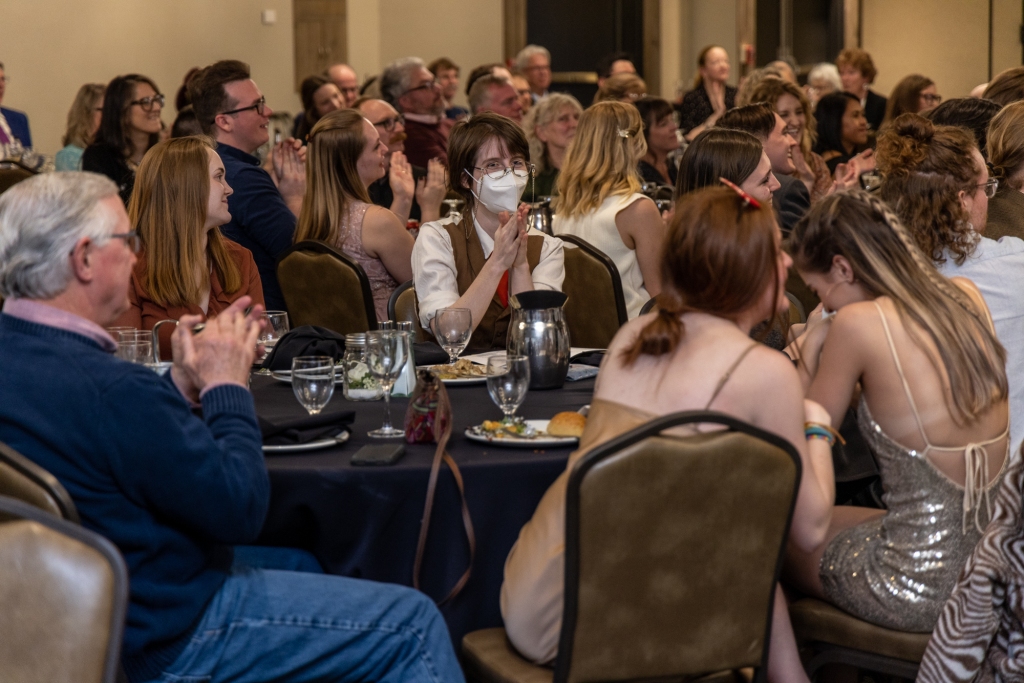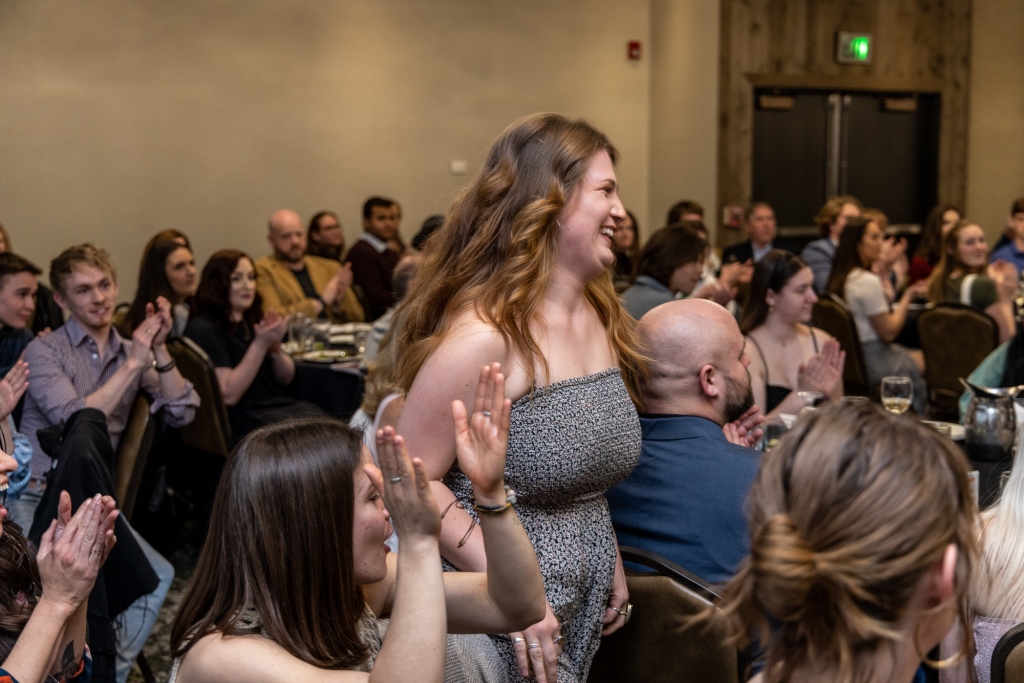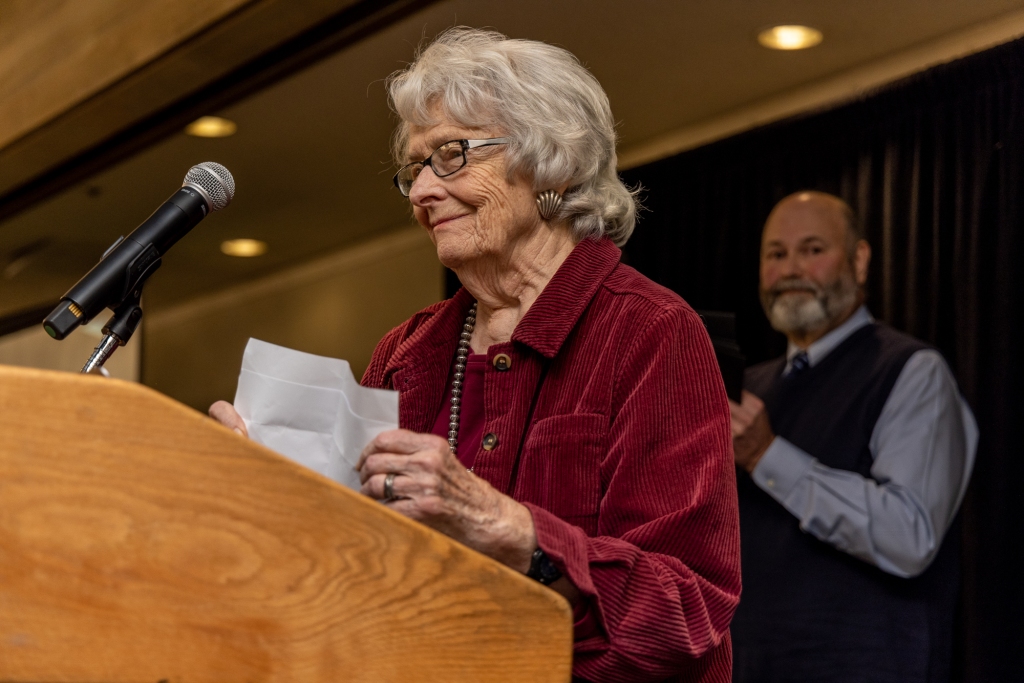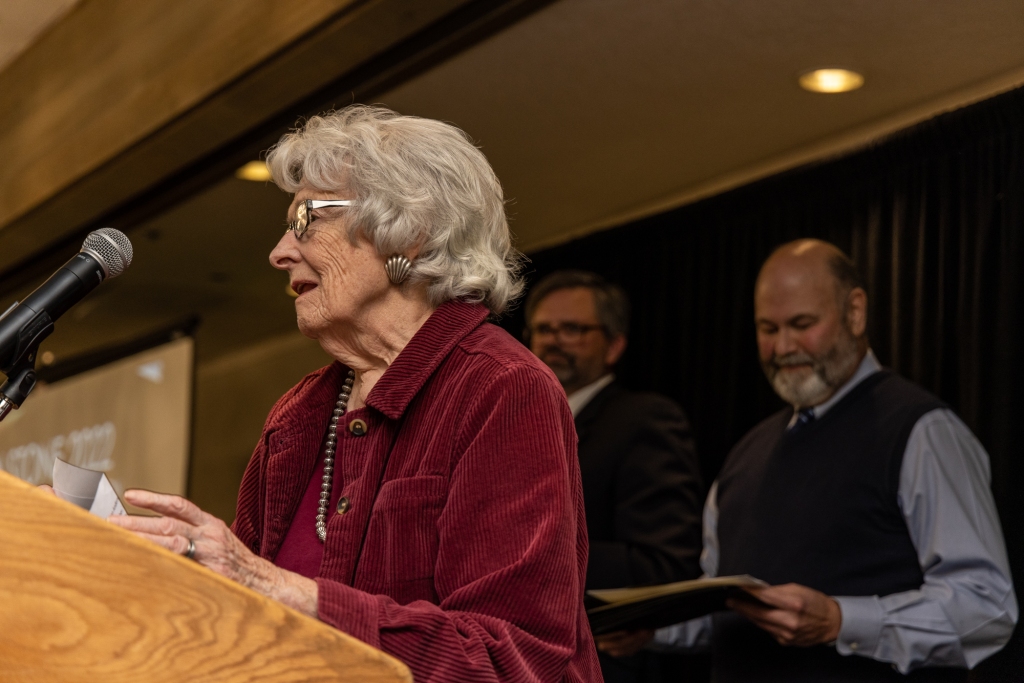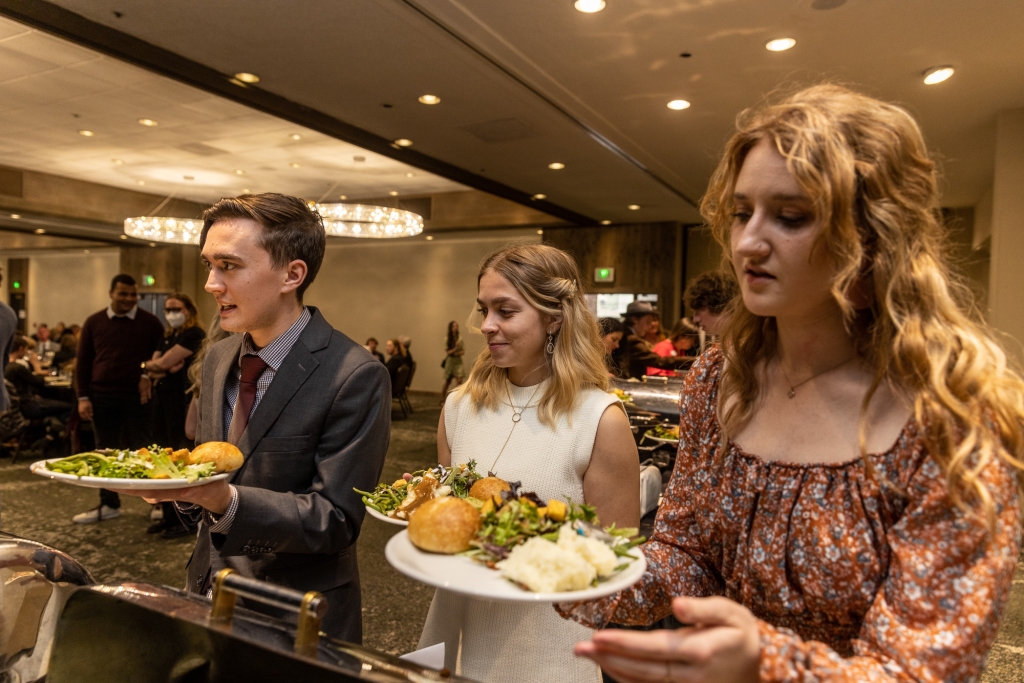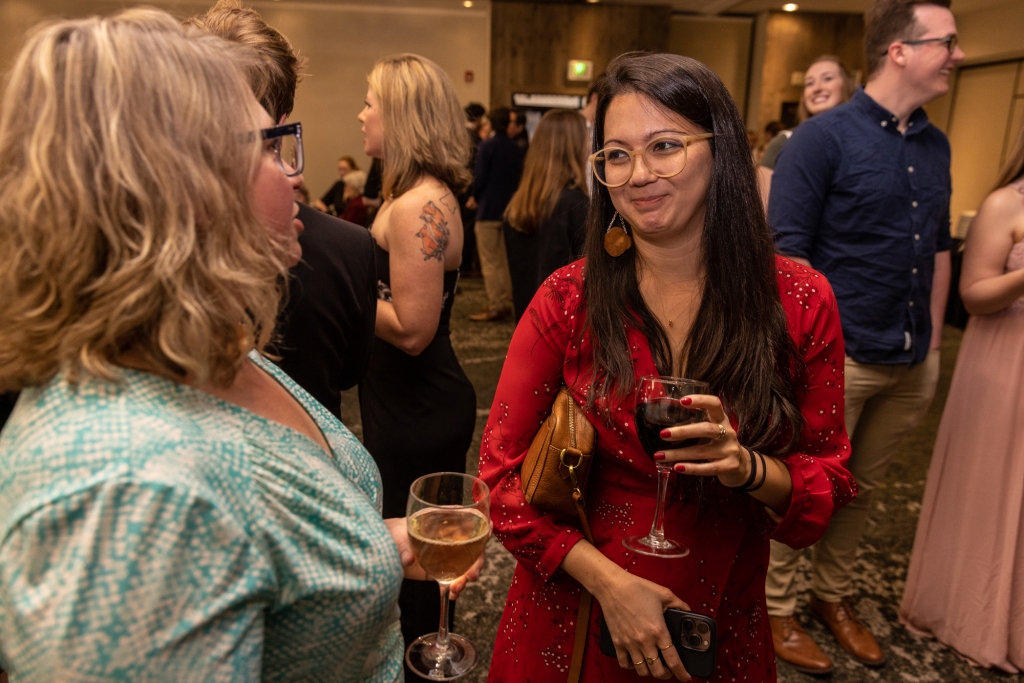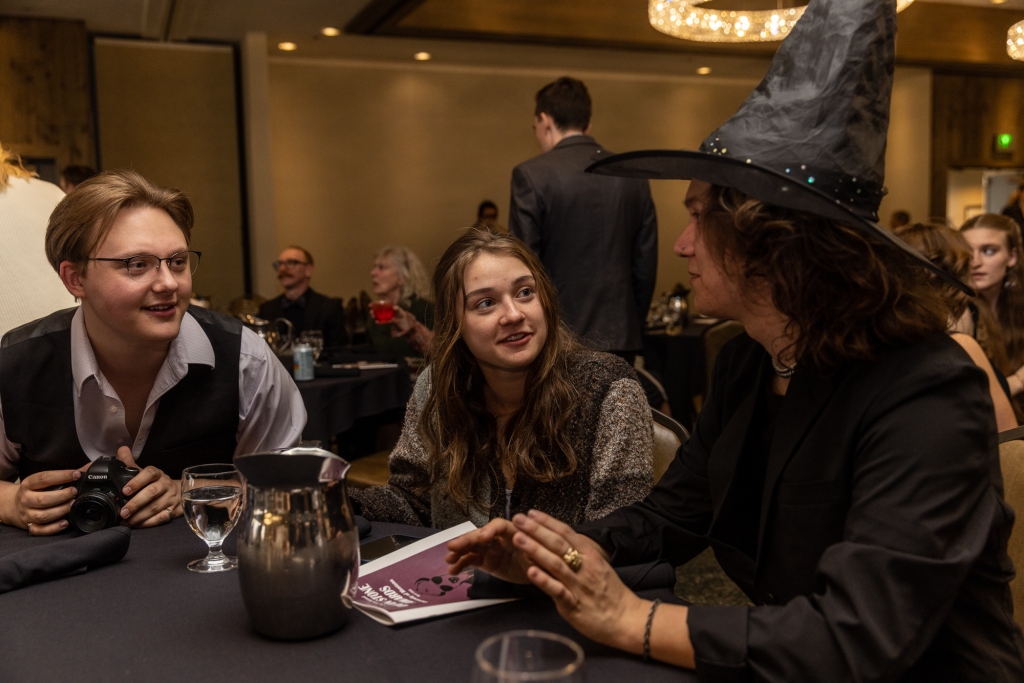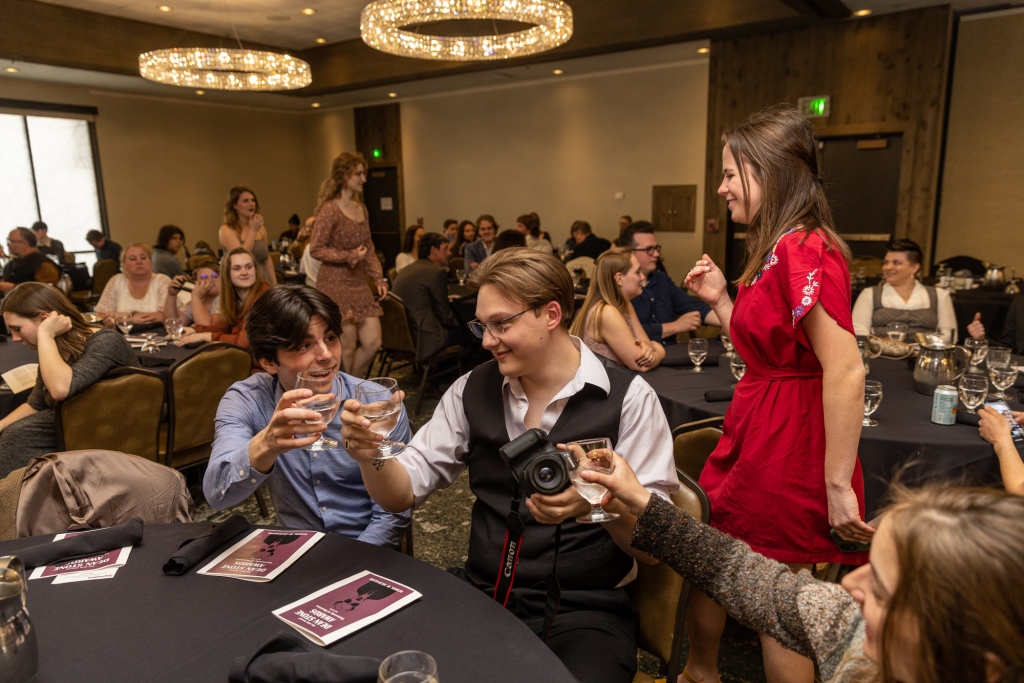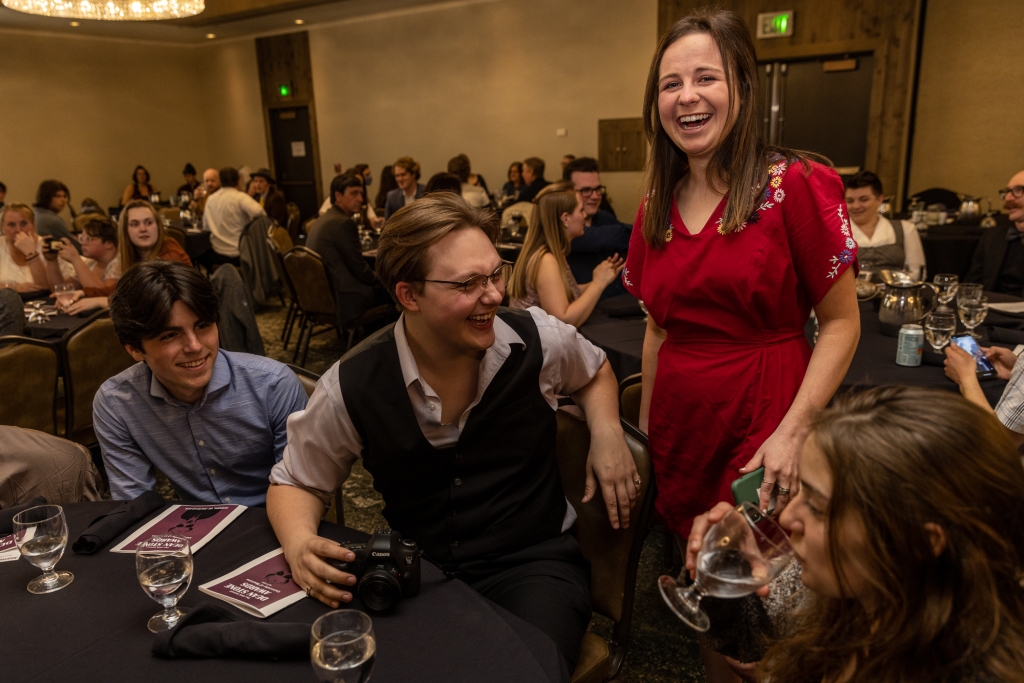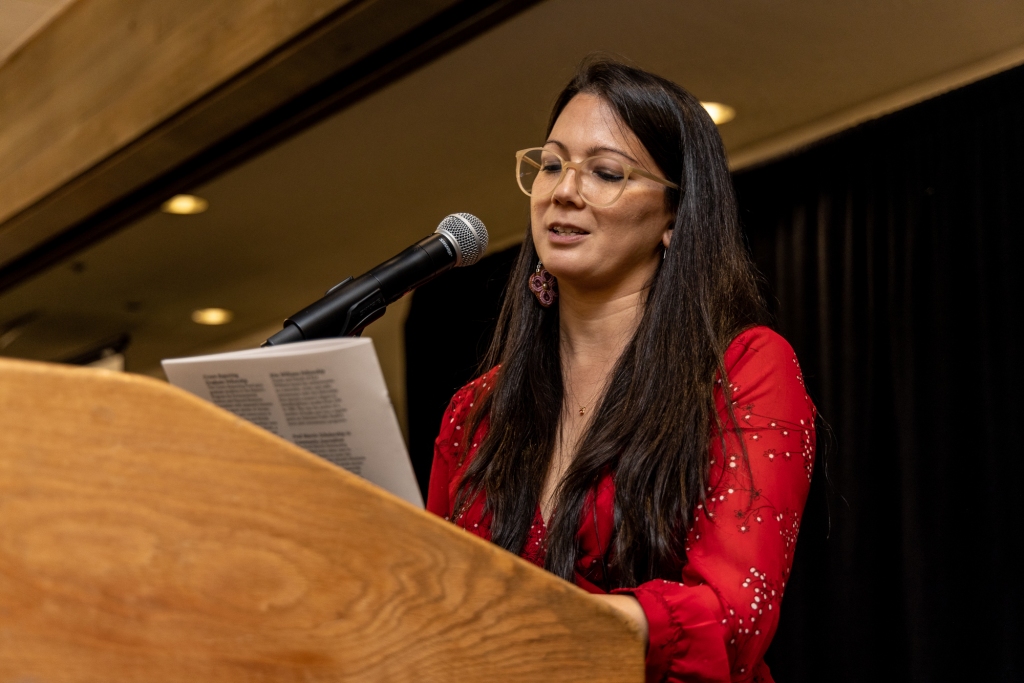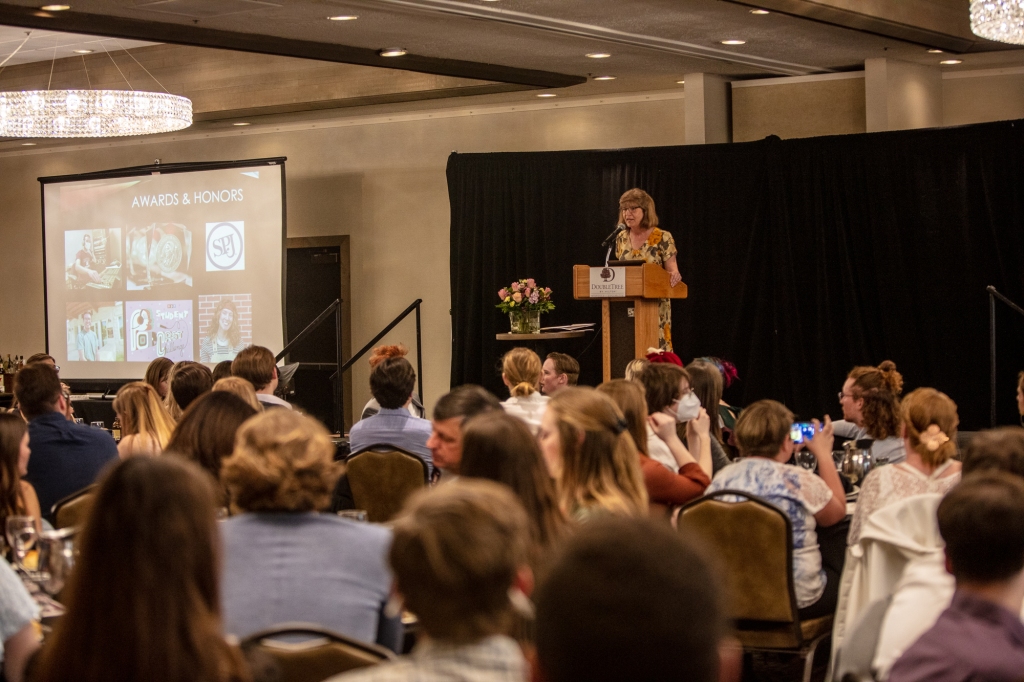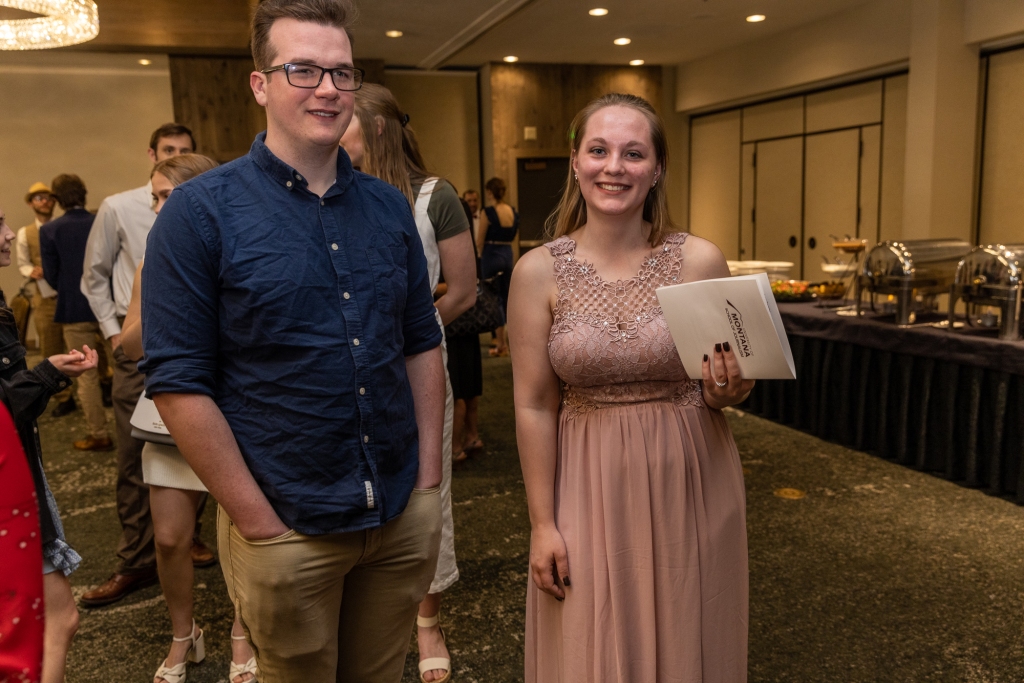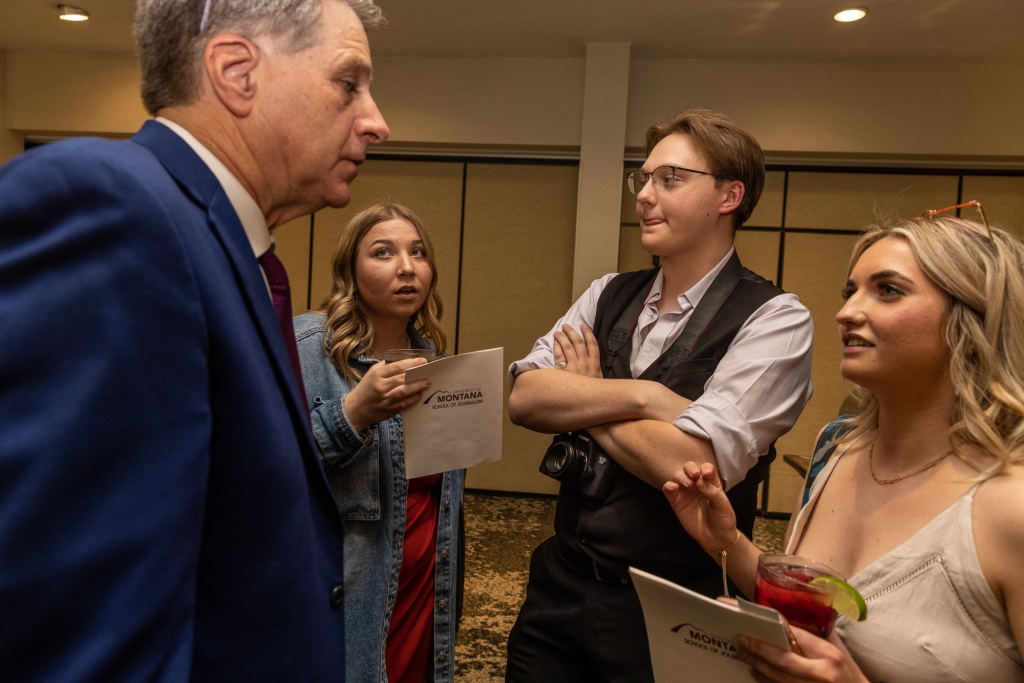
Nearly 150 high school students from as far away as Frazer (465 miles) and as close as Hellgate High (seven blocks) gathered at the University of Montana School of Journalism on April 21 to celebrate the state’s top high school media makers, connect with each other and take workshops with the school’s professors at the annual Montana High School Journalism and Media Day.
The day kicked off with the Montana High School Journalism Awards, given by the School of Journalism and the Montana Journalism Education Association. Bigfork High School’s Elizabeth Hyde was named the Montana High School Journalist of the Year, with MJEA’s Beth Britton and Missoulian publisher Jim Strauss hailing her work and promise as a young journalist.
In the “pacesetter” categories, the Hellgate Lance won for online publications among AA schools and The Norse Code from Bigfork High won for Class B schools. Eagle TV at Big Sky High School took home the broadcast pacesetter award for AA schools and the Norse Code at Bigfork High won the category for B schools.
For newspaper pacesetters, The Hellgate Lance won the AA category, The Signal Butte at Custer County High School won for Class A, The Florence Chronicle at Florence-Carlton High won Class B and the Sagebrush Saga from Garfield County High School won in Class C.
Kendall Boehm of the Florence Chronicle won the Student Free Press Award for coverage of a club that formed to support LGBTQ+ students.
“It is always tricky for student journalists to cover controversial issues in your school, but even more difficult to cover a topic that has exploded into the divisive world of social media beyond the schoolhouse gates,” the judges wrote.
See the full list of awards and photos below.
























Photos by Griffin Ziegert.
| High School Class | Category | Place | Newspaper/Program | School | Individual Winner (If applicable) |
| AA | Feature Writing | First | The Hellgate Lance | Hellgate High School | Ali Caudle |
| C | Feature Writing | First | Sagebrush Saga | Garfield County High School | Abby Pierce |
| AA | Sports Event Writing | First | Big Sky Sun Journal | Big Sky High School | Hollin Keintz |
| A | Sports Event Writing | First | Signal Butte | Custer County High School | Miranda Moe |
| B | Sports Event Writing | First | Florence Chronicle | Florence-Carlton High School | Abigail Binder |
| C | Sports Event Writing | First | Ennis Mustang Monthly | Ennis High School | Lily Connor |
| AA | Sports Feature Writing | First | Hellgate Lance | Hellgate High School | Maggie Vann |
| A | Sports Feature Writing | First | The Norse Code | Bigfork High School | Liz Hyde |
| C | Sports Feature Writing | First | Sagebrush Saga | Garfield County High School | Abby Pierce |
| AA | Opinion Writing | First | Hawk Talk | Bozeman High School | Miles Fastnow |
| C | Opinion Writing | First | Mustang Monthly | Ennis High School | Ruby Blazer |
| AA | News Writing | First | Hawk Tawk | Bozeman High School | Olivia Bulis |
| A | News Writing | First | Signal Butte | Custer County High School | Lauren Reinhart |
| B | News Writing | First | The Howl Newspaper | Shelby High School | Hayden Schilling |
| C | News Writing | First | The Mustang Monthly | Ennis High School | Ruby Blazer |
| B | Feature Photography | First | The Norse Code | Bigfork High School | Zoe Sellers |
| AA | News Photography | First | The Stampede | C.M. Russell High School | Isabel Foley |
| AA | Sports Photography | First | Sun Journal | Big Sky High School | Kolja Gerstenkorn |
| AA | Audio | First | The Joust | Hellgate High School | Darian Davalos, Win Duerk and Sierra Meissner |
| C | Video Newscast | First | Falcon Student News | Twin Bridges High School | Ruby Waller, Sam Konen, Emma Konen and Callie Kaiser |
| AA | Video: Sports | First | Eagle TV | Big Sky High School | Jacob Gardanier, Cole Campbell, Tre Reed and Dawson Raulston |
| B | Video: Sports | First | The Norse Code | Bigfork High School | Abby Curtiss |
| AA | Video: PSA | First | Eagle TV | Big Sky High School | Douglas Lautzenheiser, Gwen Fleming-Campbell and Hollin Keintz |
| AA | Video: Arts & Entertainment | First | Eagle TV | Big Sky High School | Hollin Keintz, Doug Lautzenheiser and Gwen Fleming-Campbell |
| B | Video: Arts & Entertainment | First | The Norse Code | Bigfork High School | Liz Hyde and Zoe Sellers |
| AA | Video: General Assignment News | First | Eagle TV | Big Sky High School | Hollin Keintz |
| AA | Photo Illustration | First | The Stampede | C.M. Russell High School | Isabel Foley |
| A | Advertising Design | First | Signal Butte | Custer County District High School | Signal Butte Staff |
| C | Advertising Design | First | Sagebrush Saga/Garfield Yearbook | Garfield County District High School | Brenna Murnion |
| B | Editorial Cartooning | First | The Norse Code | Bigfork High School | Lillian Peterson |
| C | Editorial Cartooning | First | The Mustang Monthly | Ennis High School | Gracie Leavitt |
| AA | Infographic | First | The Stampede | C.M. Russell High School | Isabel Foley |
| A | Infographic | First | Signal Butte | Custer County High School | Lauren Reinhart |
| B | Infographic | First | The Norse Code | Bigfork High School | Piper Lee |
| A | Newspaper Design | First | Signal Butte | Custer County High School | |
| B | Newspaper Design | First | Florence Chronicle | Florence-Carlton High School | |
| AA | Online Pacesetter | First | The Hellgate Lance | Hellgate High School | |
| B | Online Pacesetter | First | The Norse Code | Bigfork High School | |
| AA | Broadcast Pacesetter | First | Eagle TV | Big Sky High School | |
| B | Broadcast Pacesetter | First | The Norse Code Newscast | Bigfork High School | |
| AA | Newspaper Pacesetter | First | The Hellgate Lance | Hellgate High School | |
| A | Newspaper Pacesetter | First | The Signal Butte | Custer County High School | |
| B | Newspaper Pacesetter | First | The Florence Chronicle | Florence-Carlton High School | |
| C | Newspaper Pacesetter | First | Sagebrush Saga | Garfield County High School | |
| B | Student Free Press Award | First | Florence Chronicle | Florence-Carlton High School | Kendall Boehm |
| B | High School Journalist of the Year | Bigfork High School | Elizabeth Hyde |

